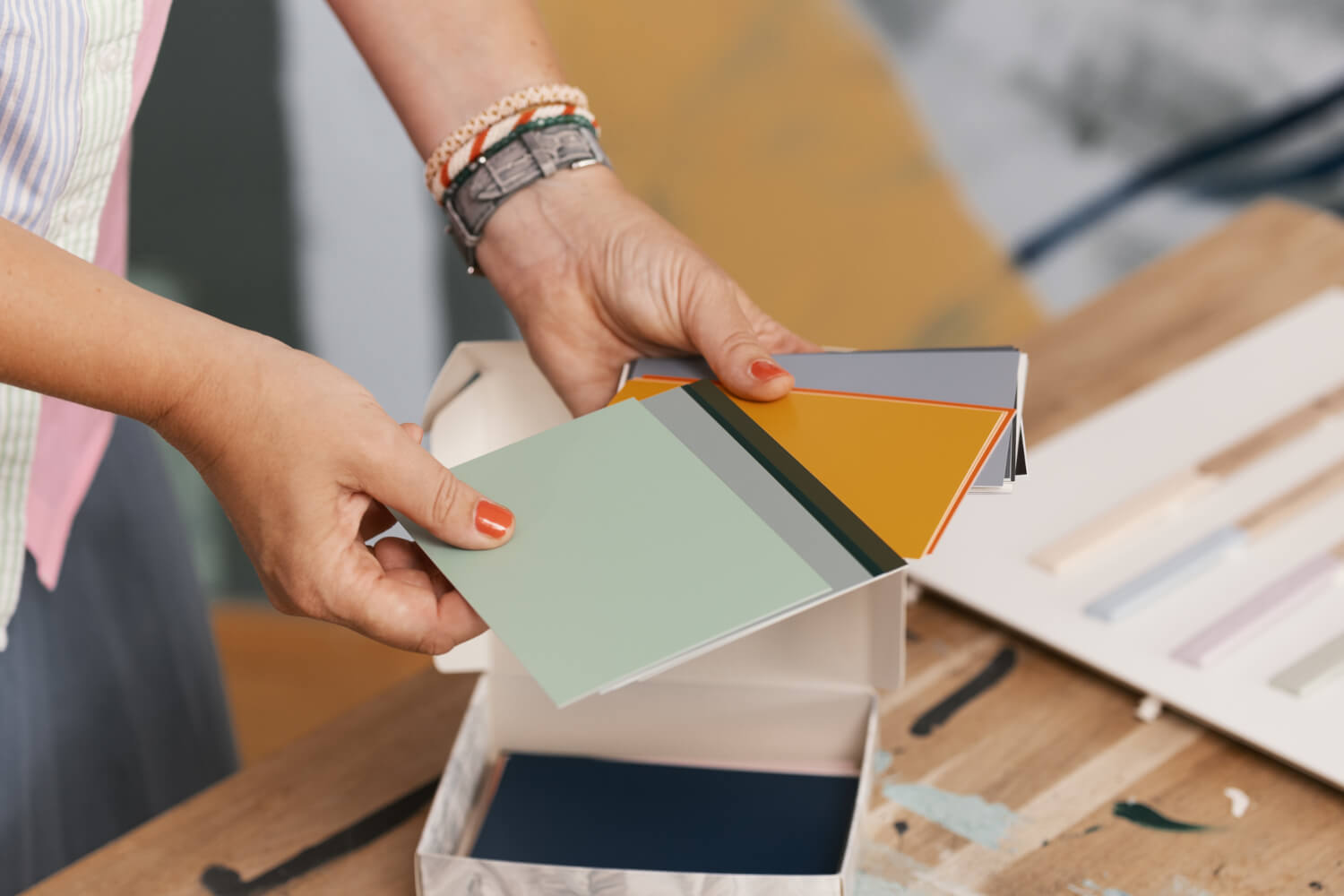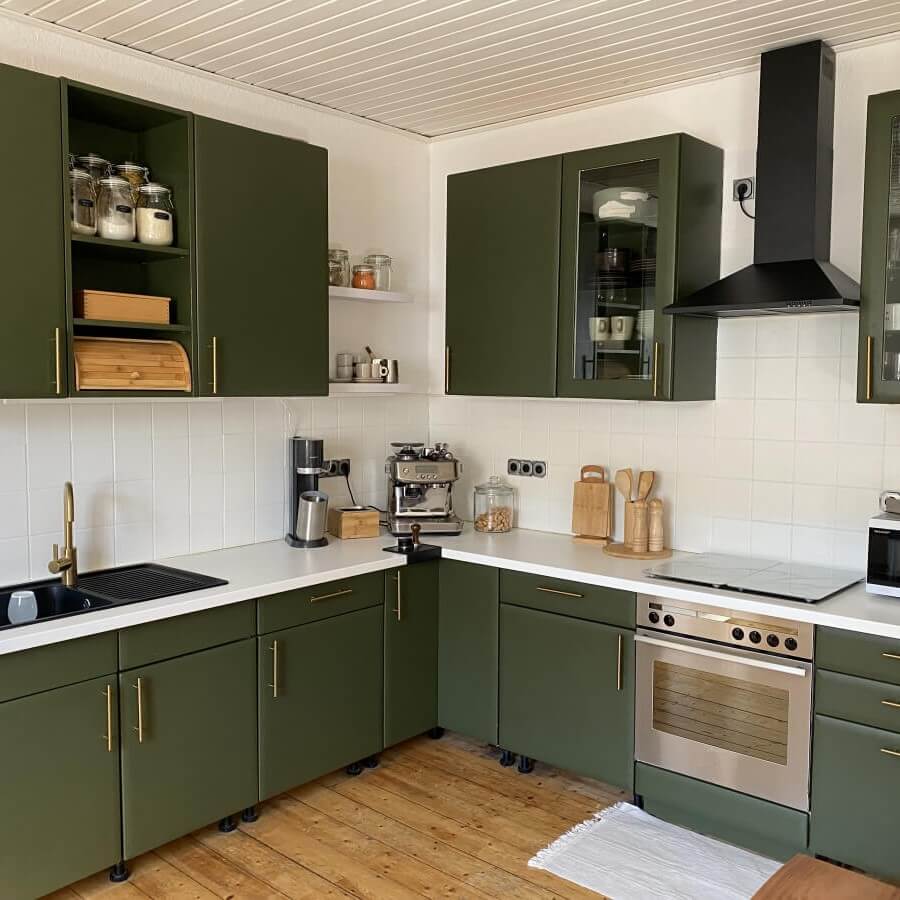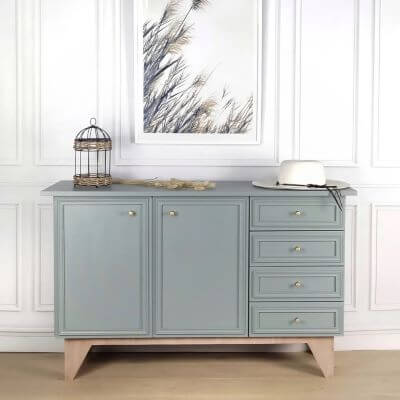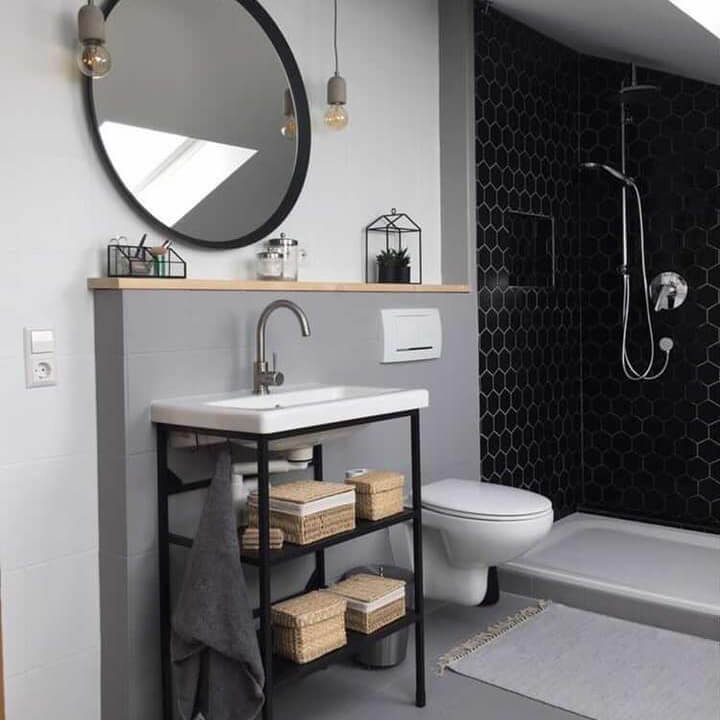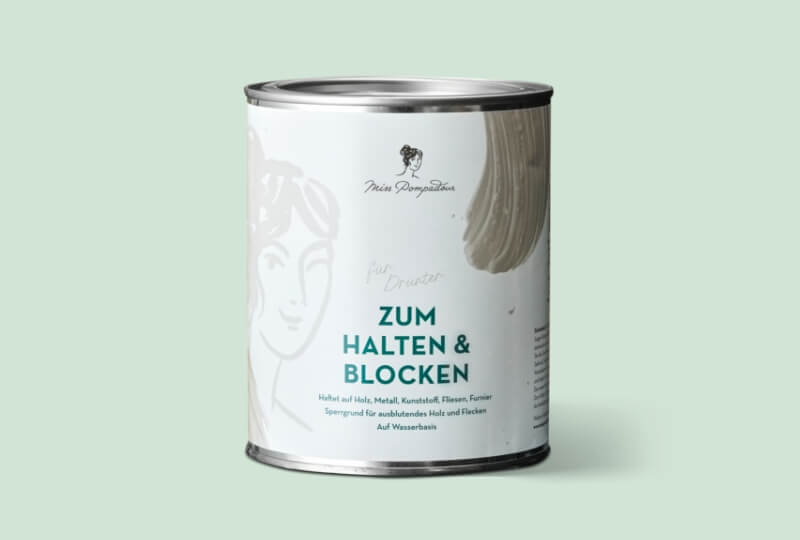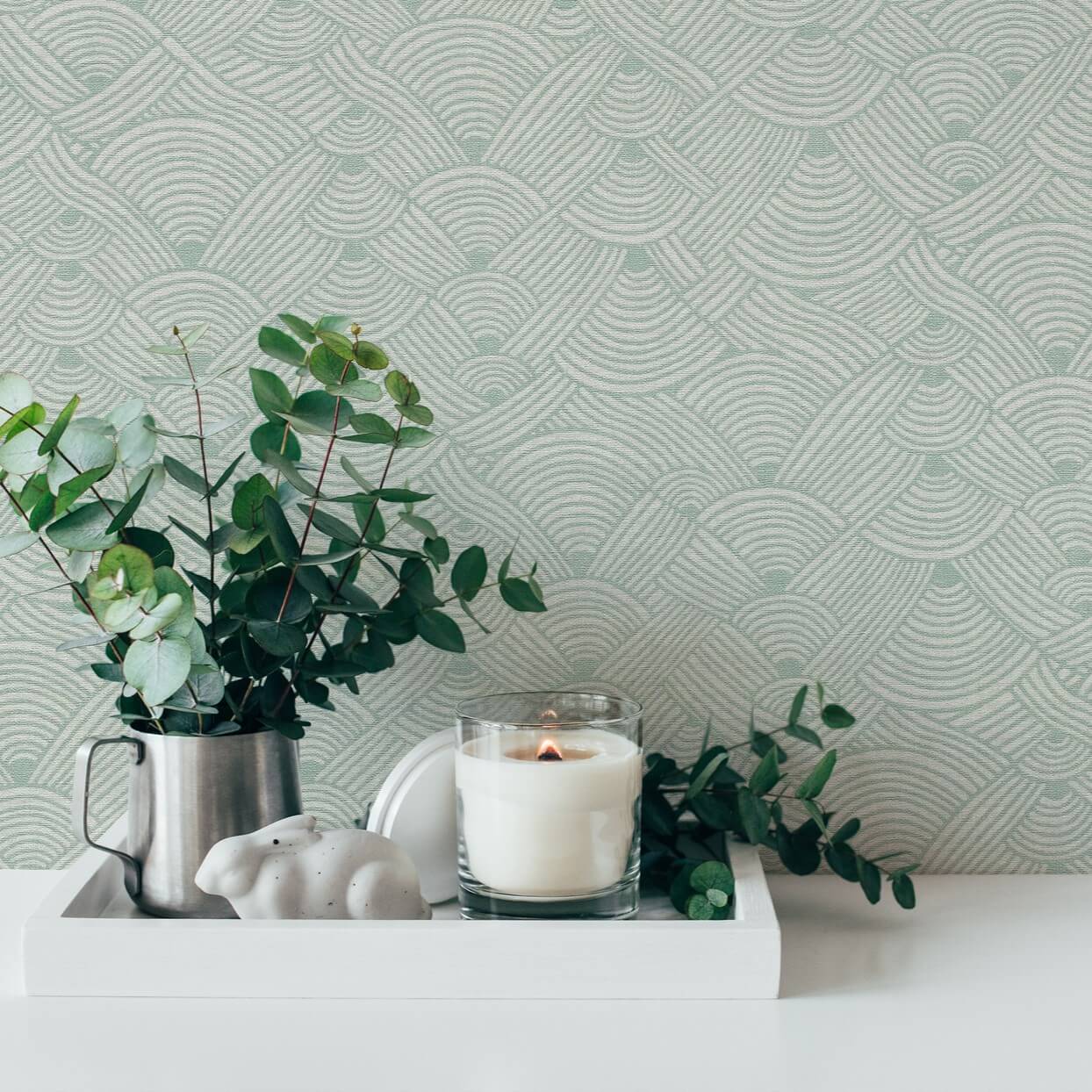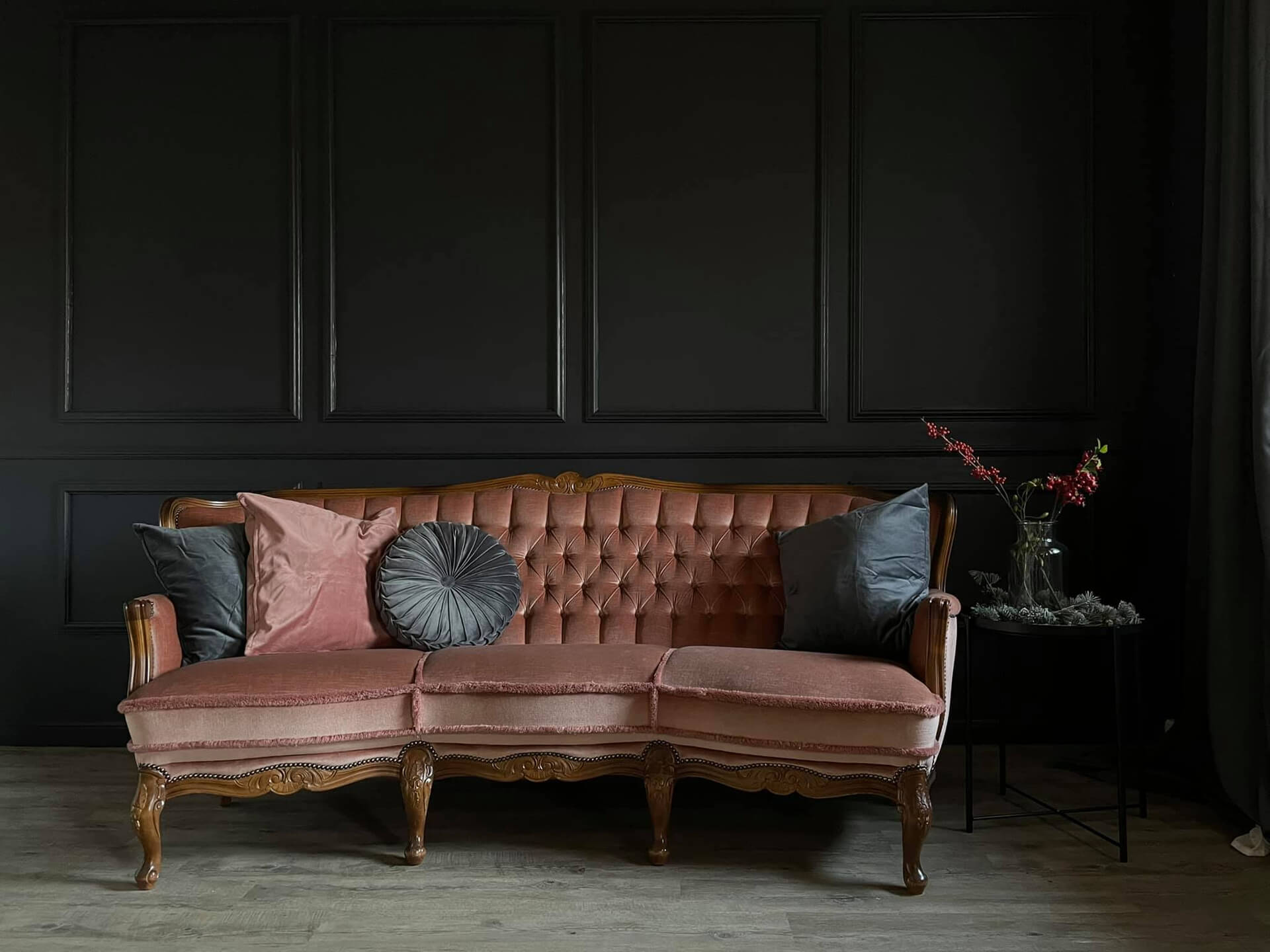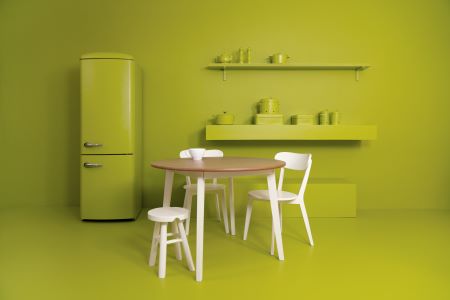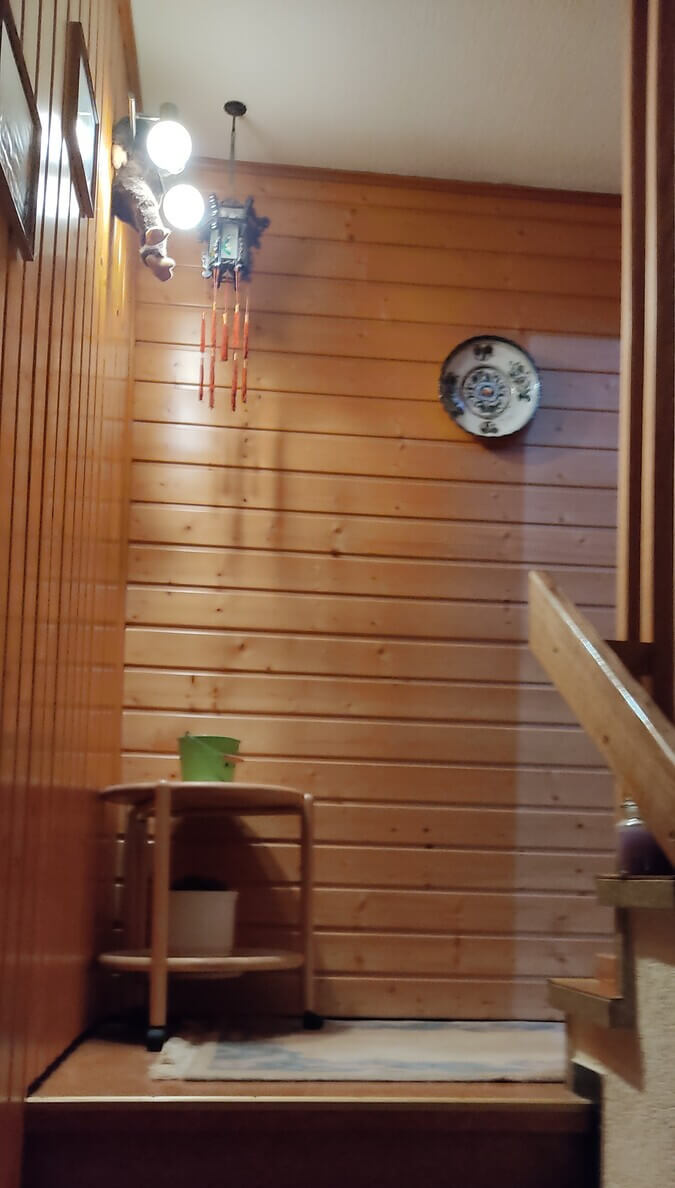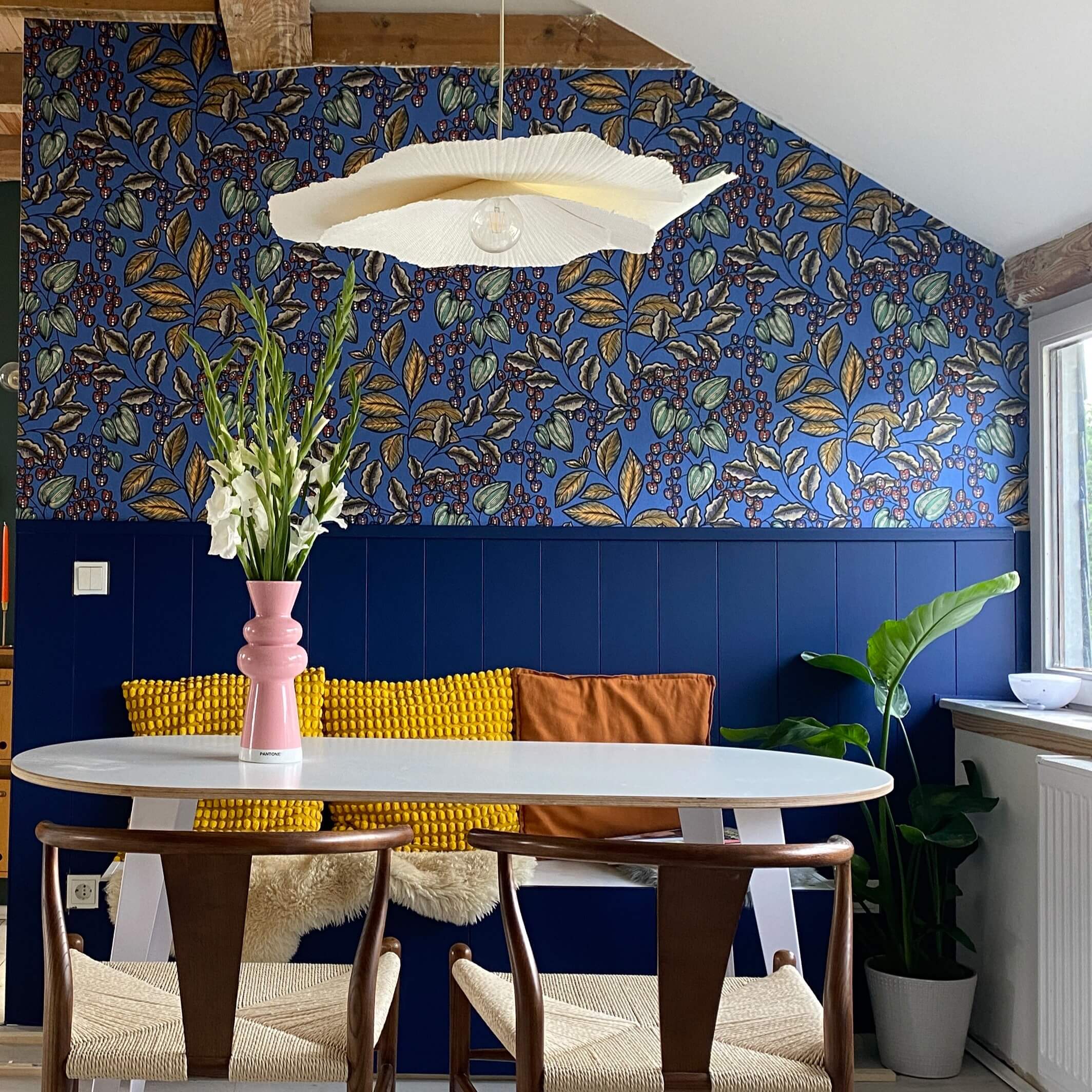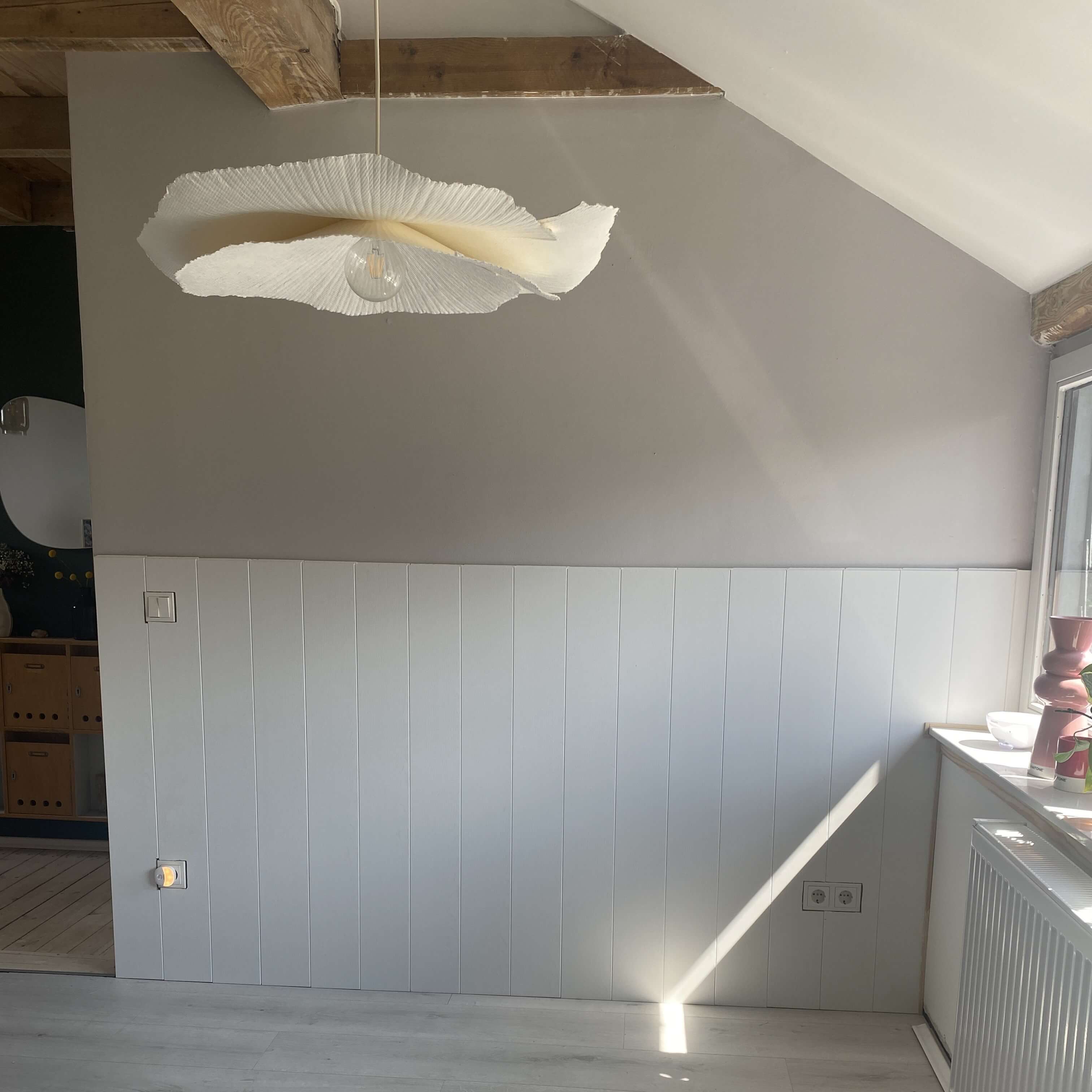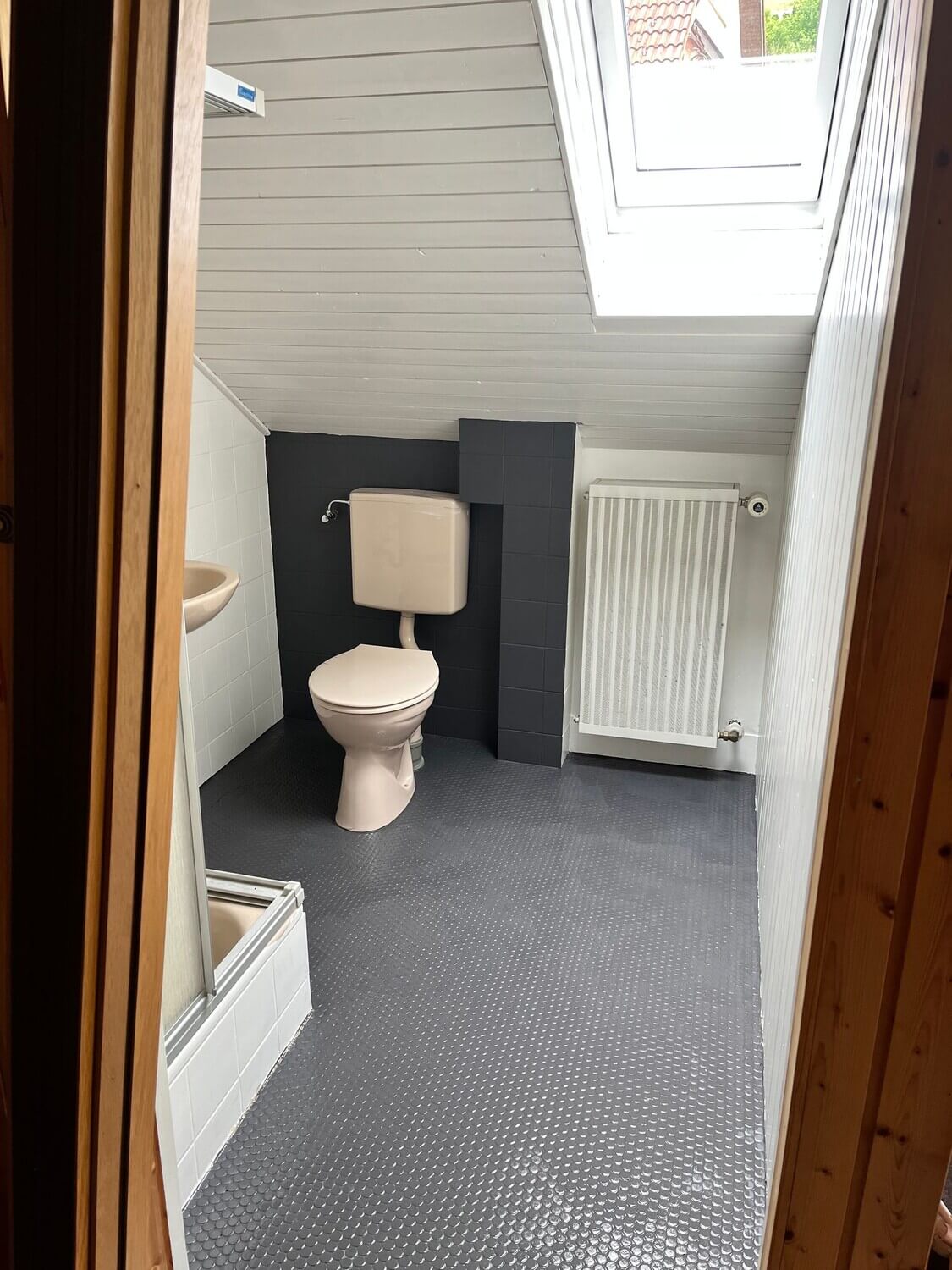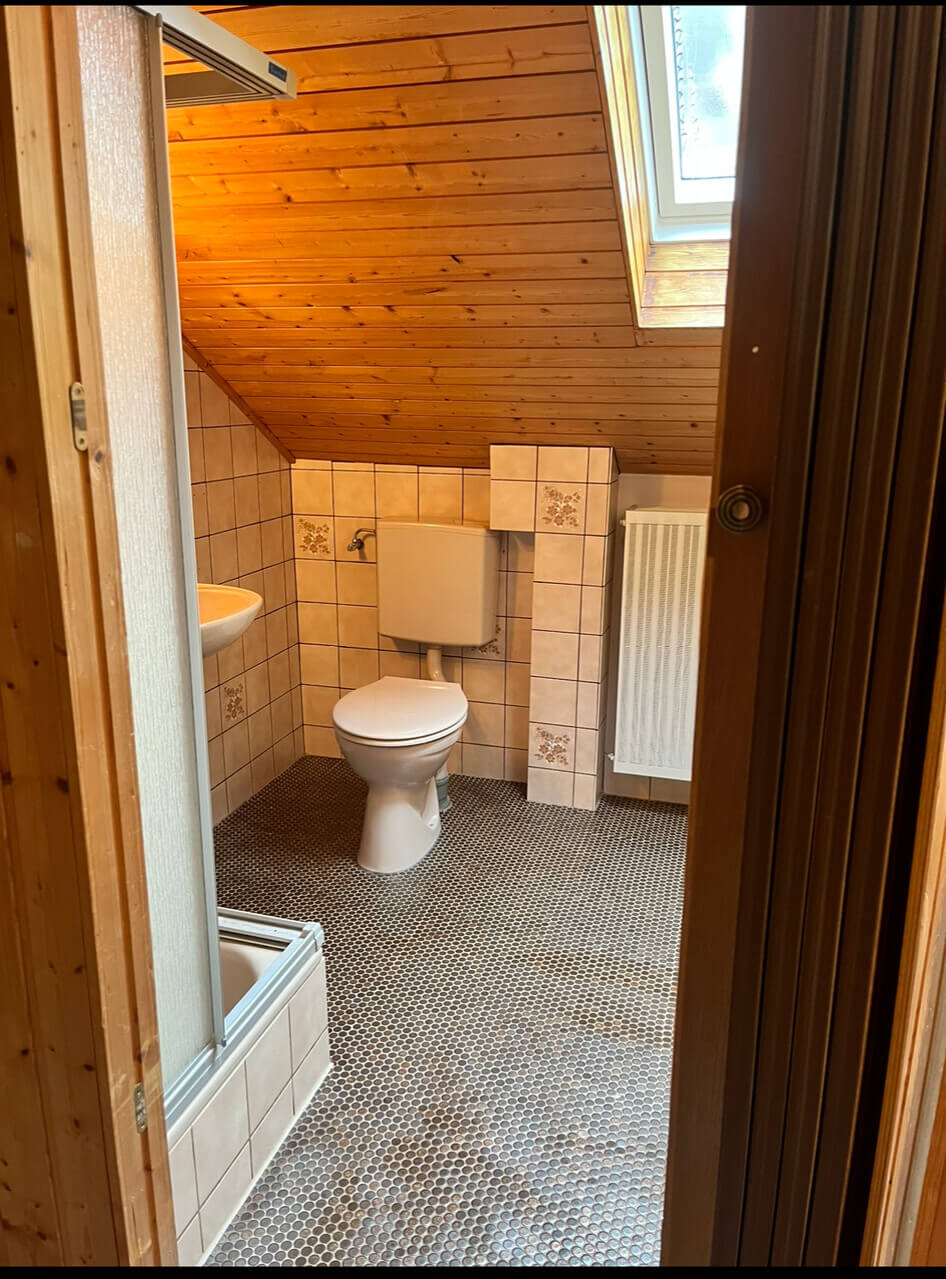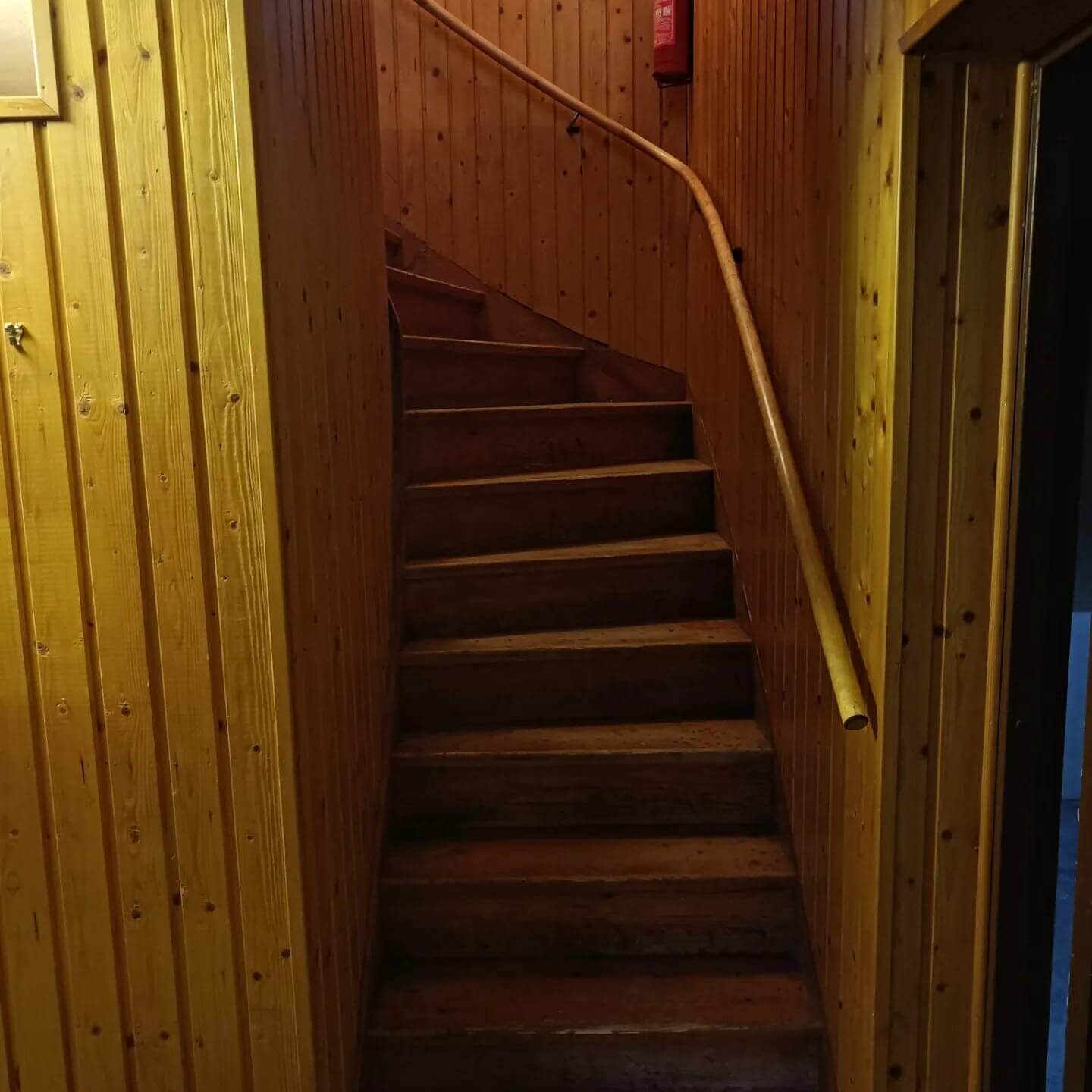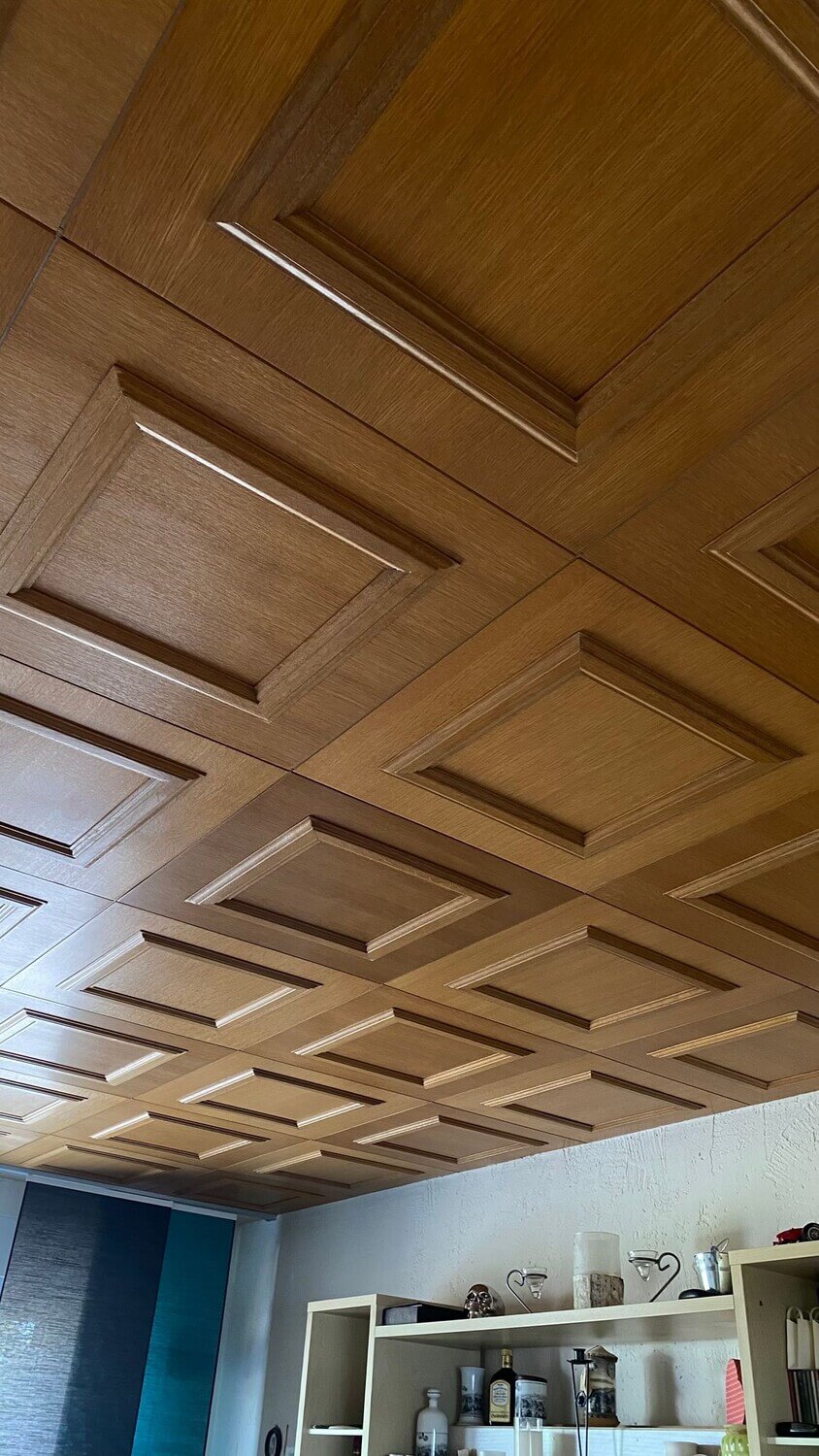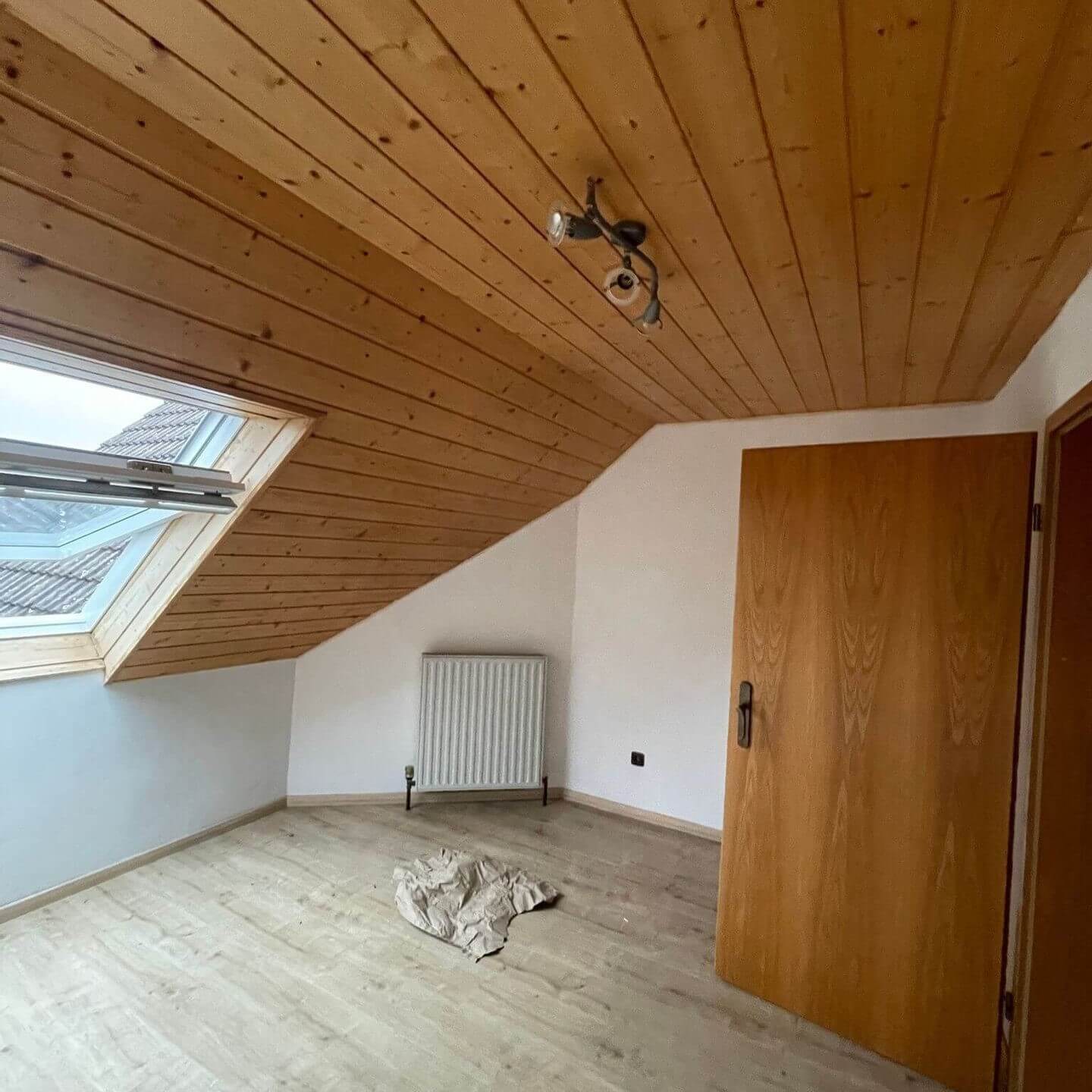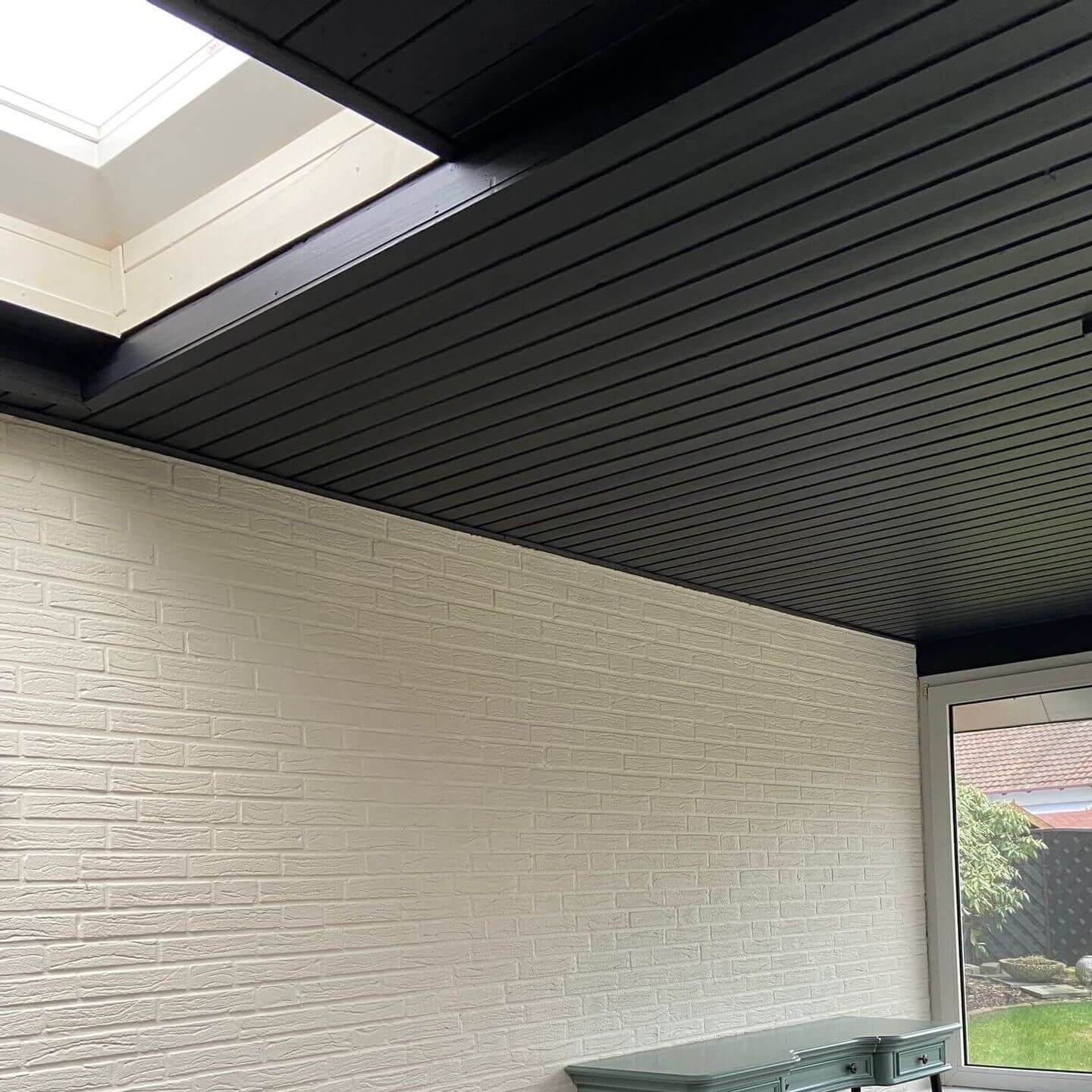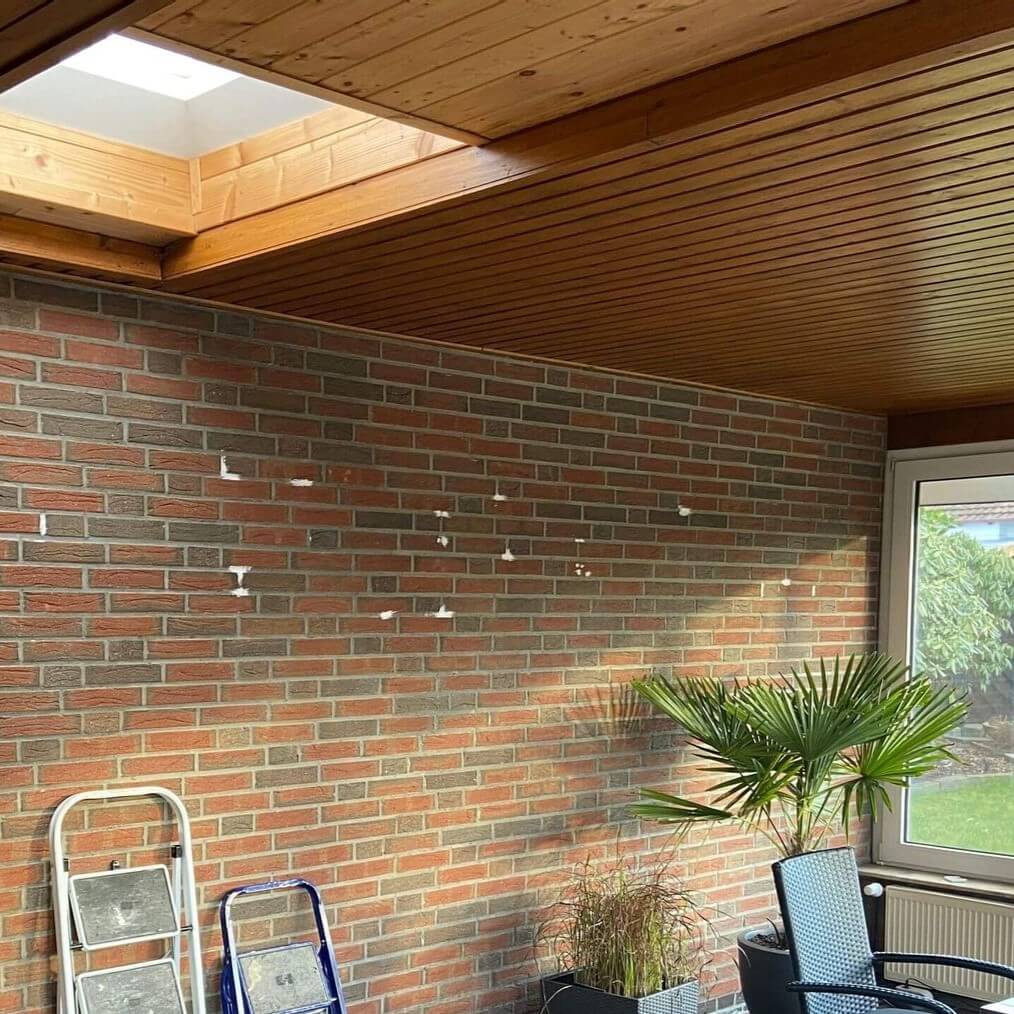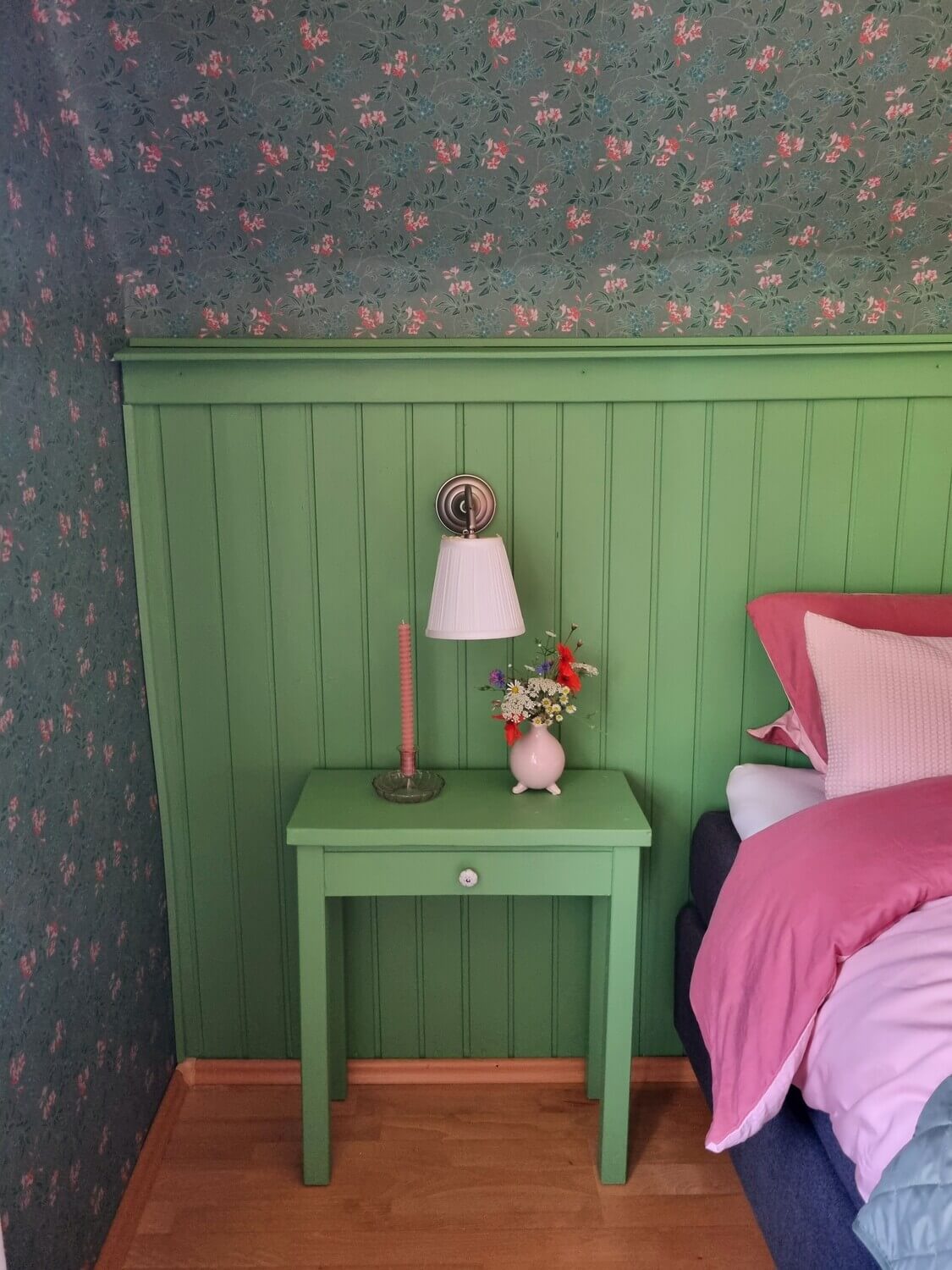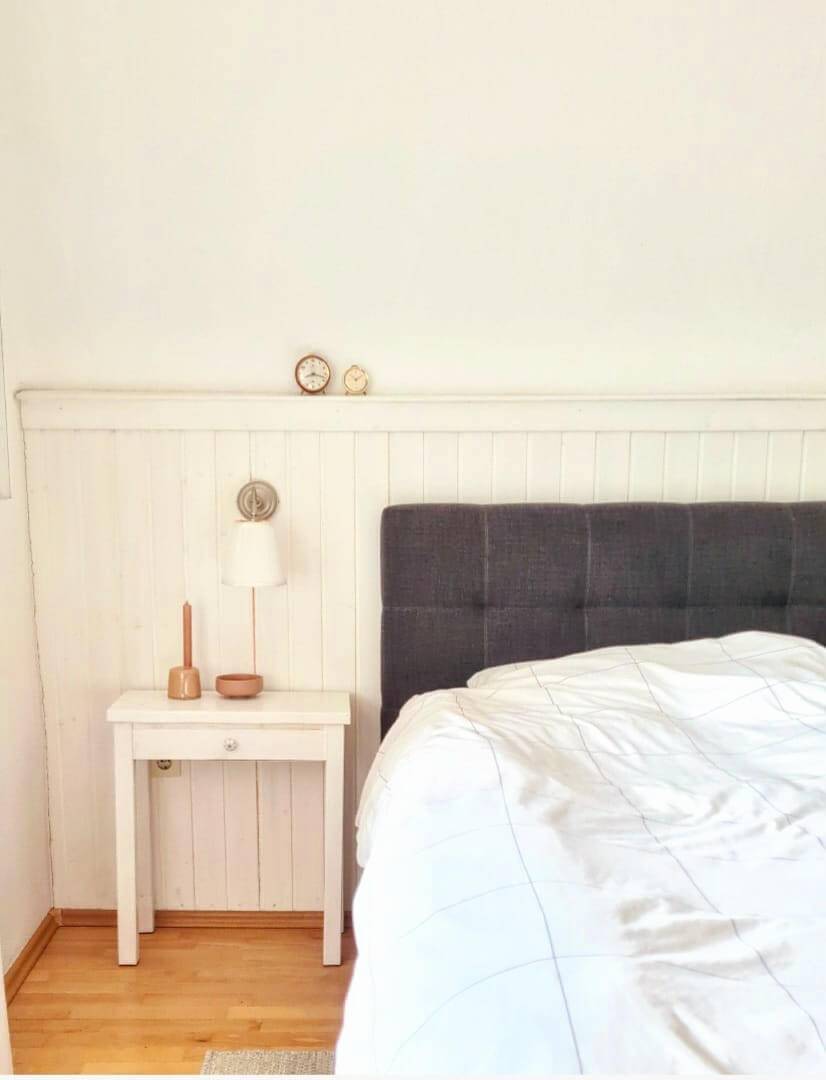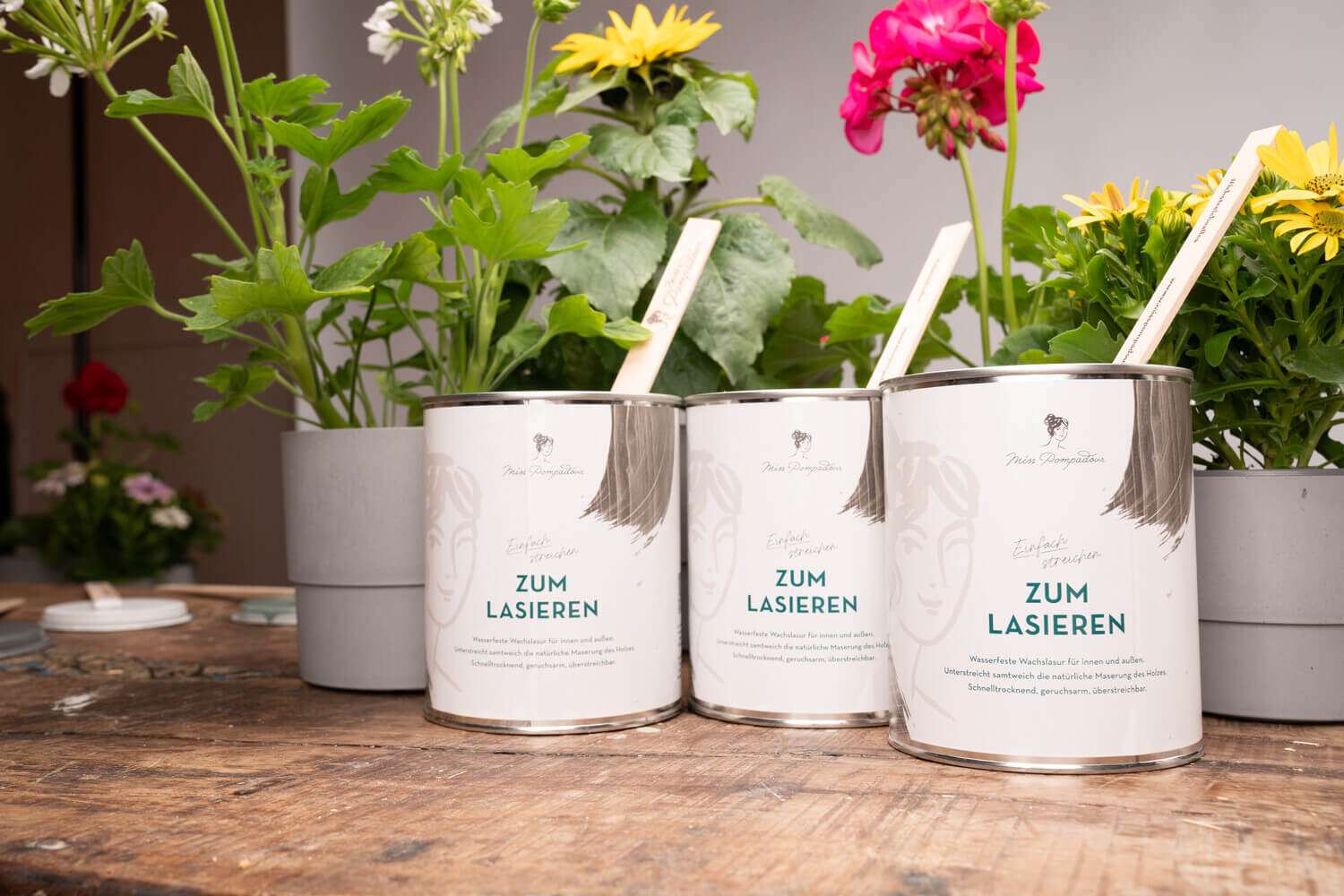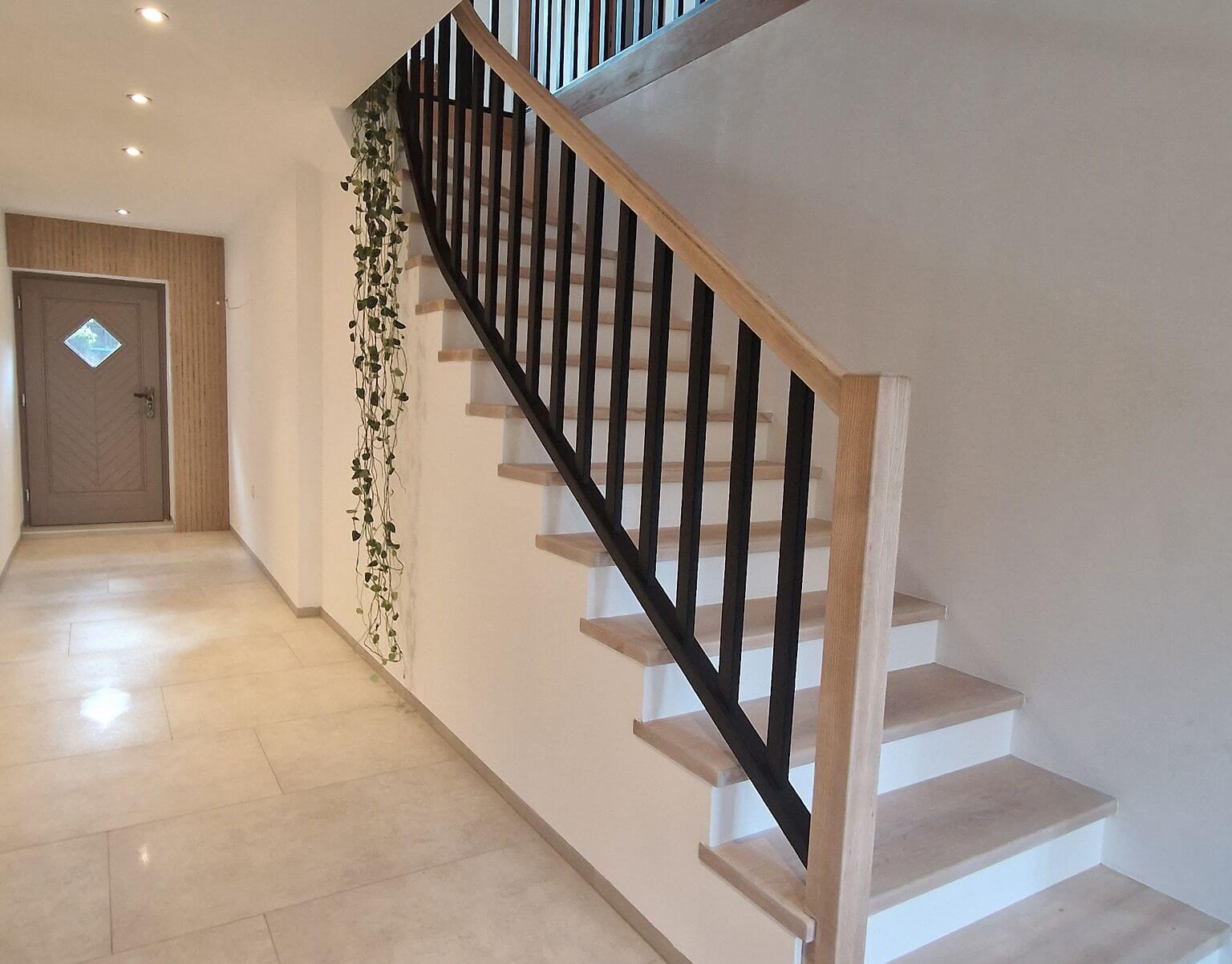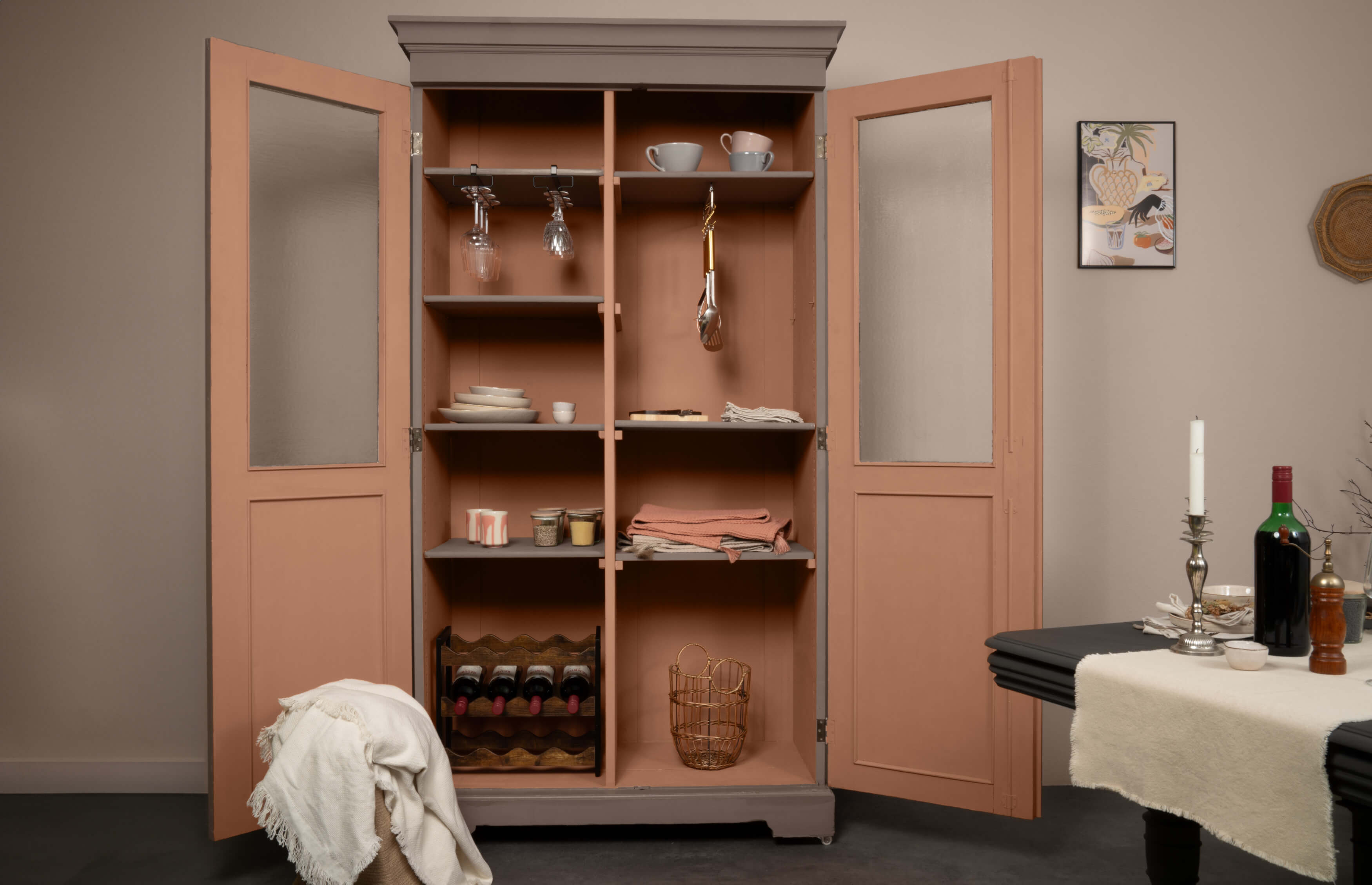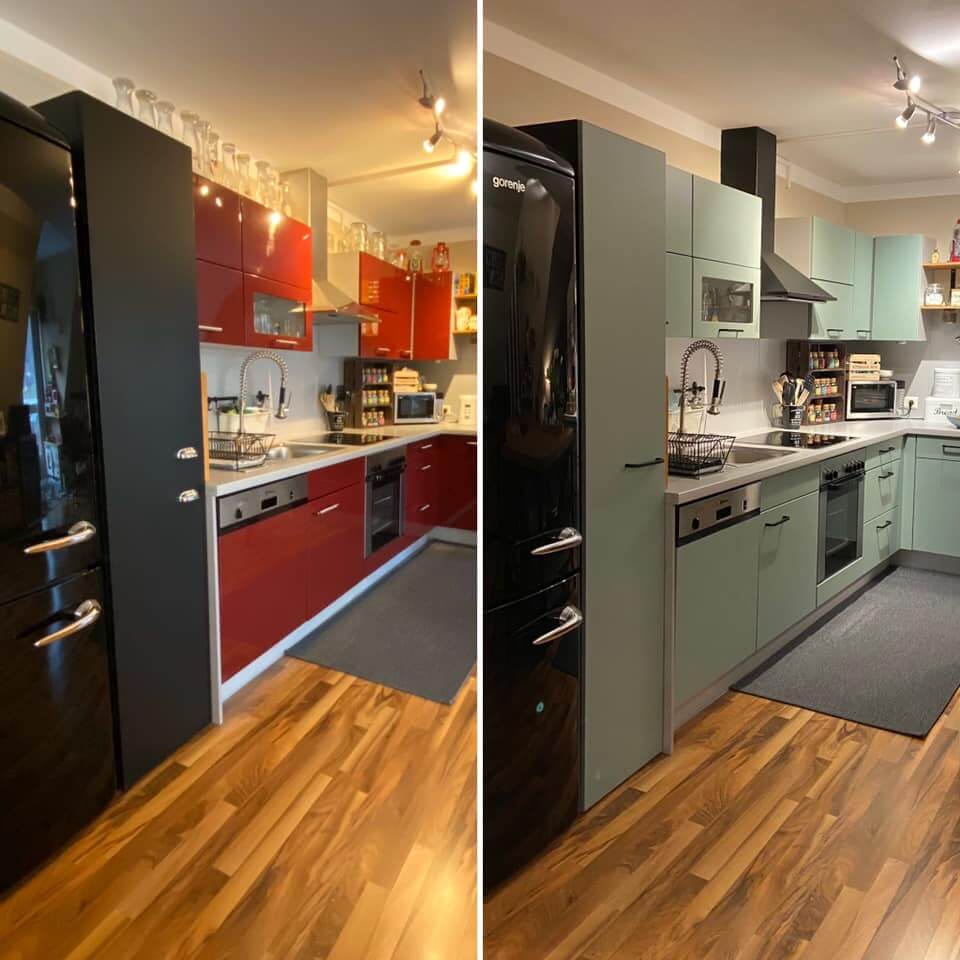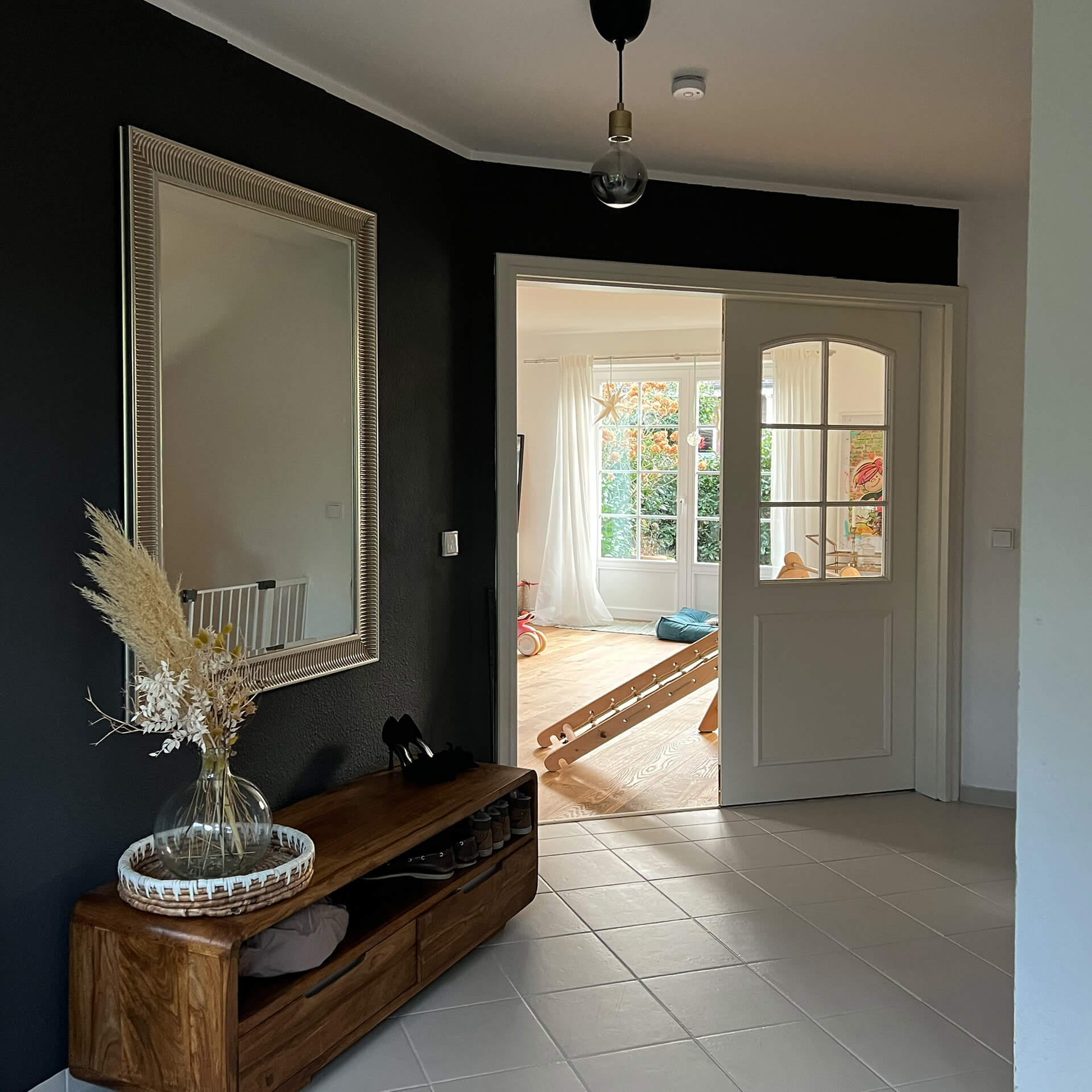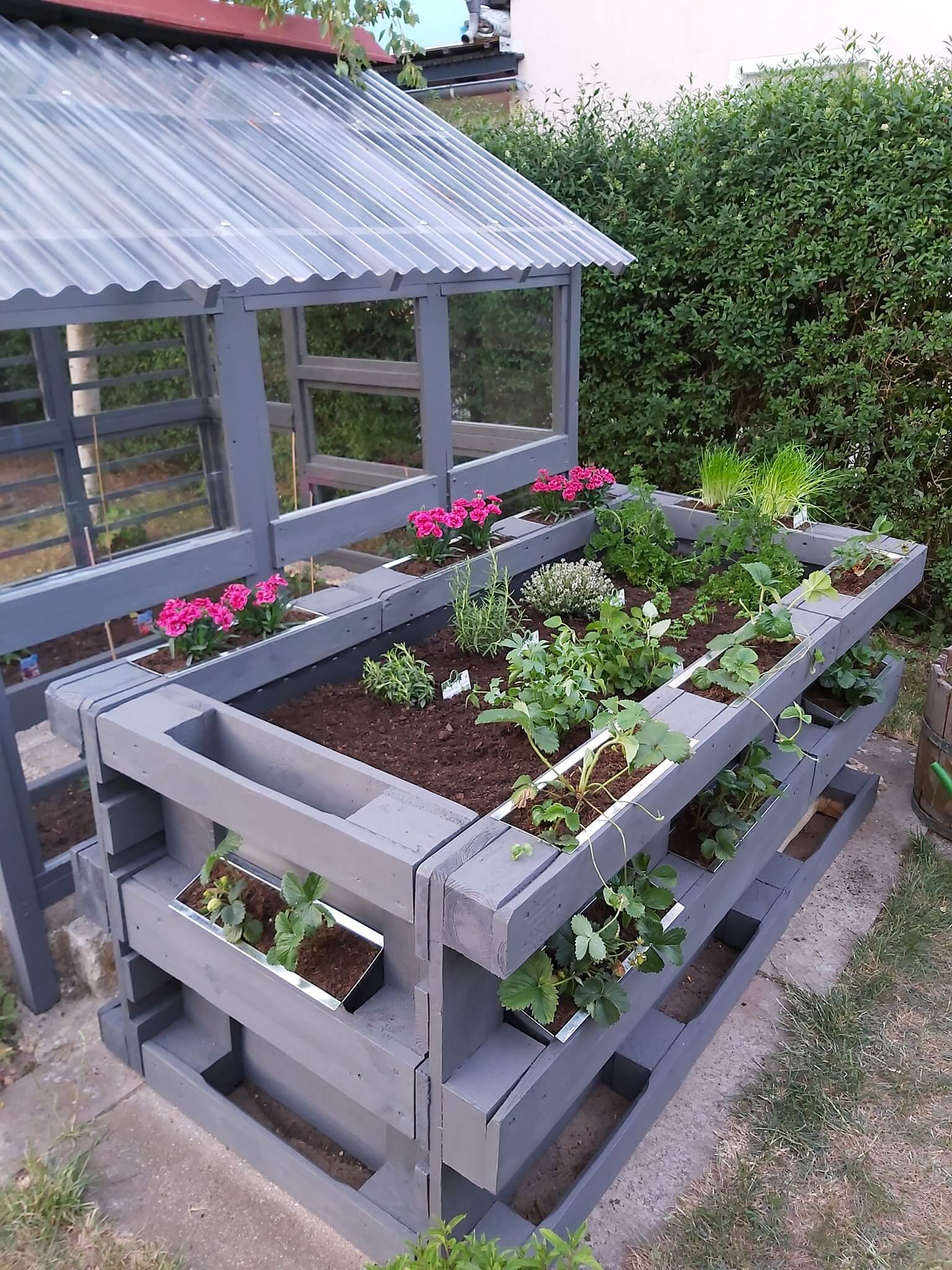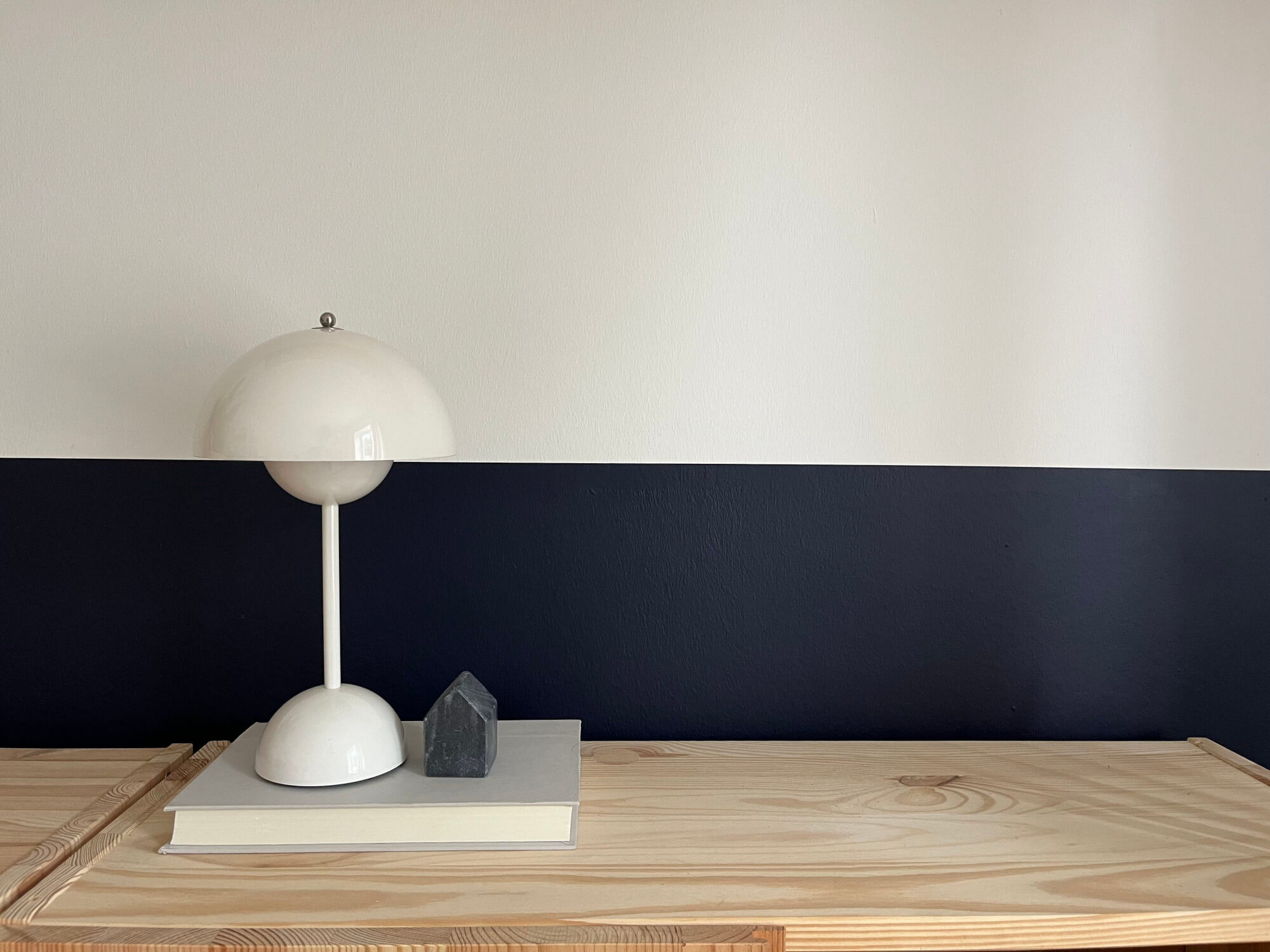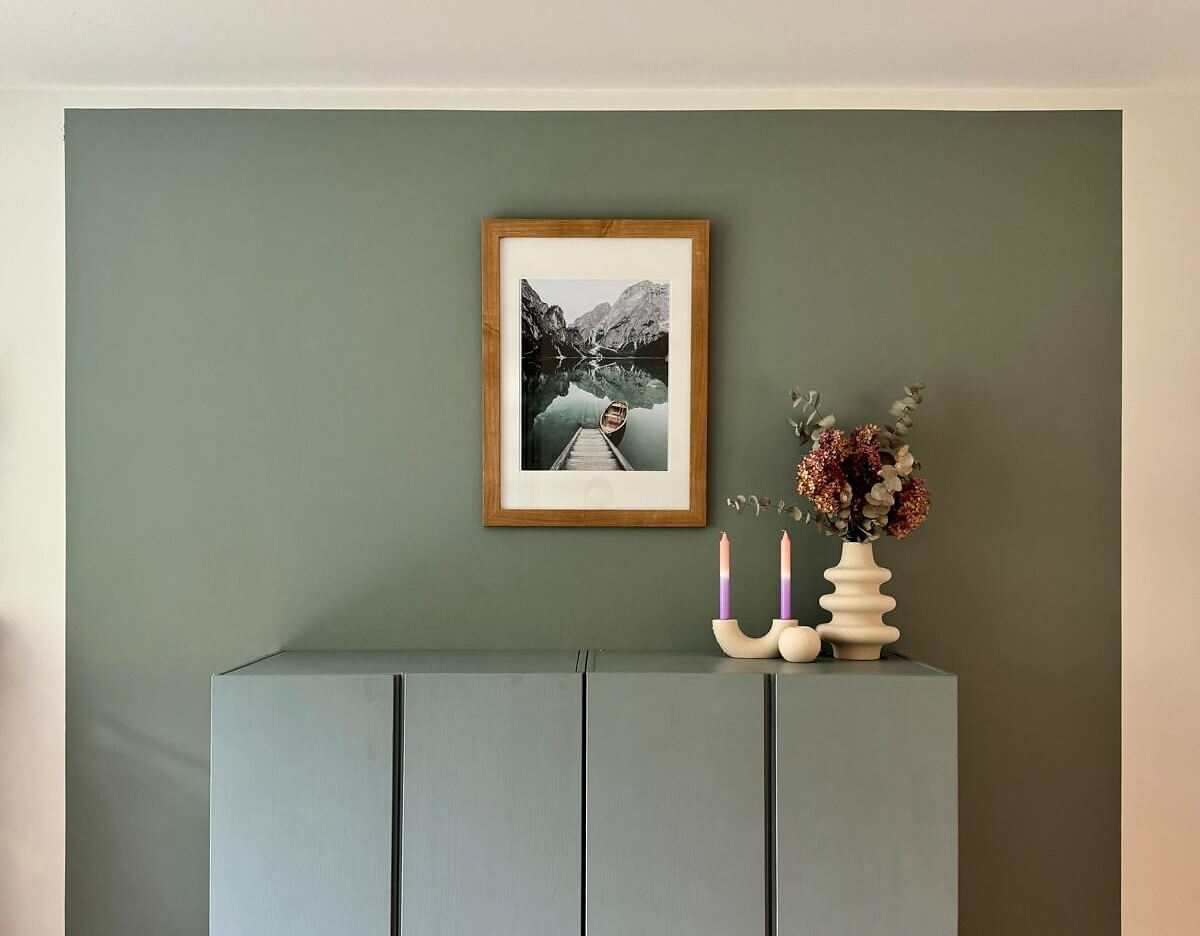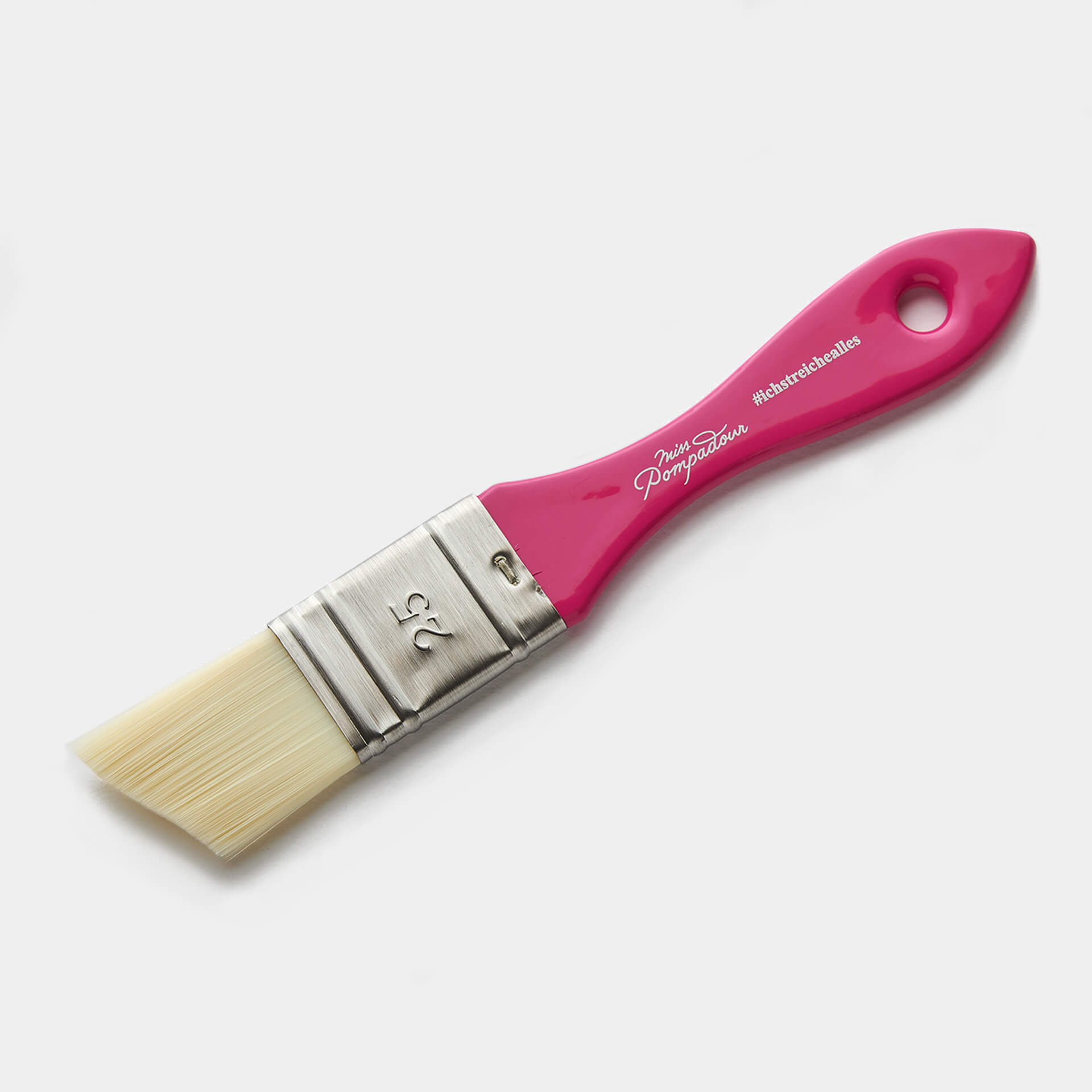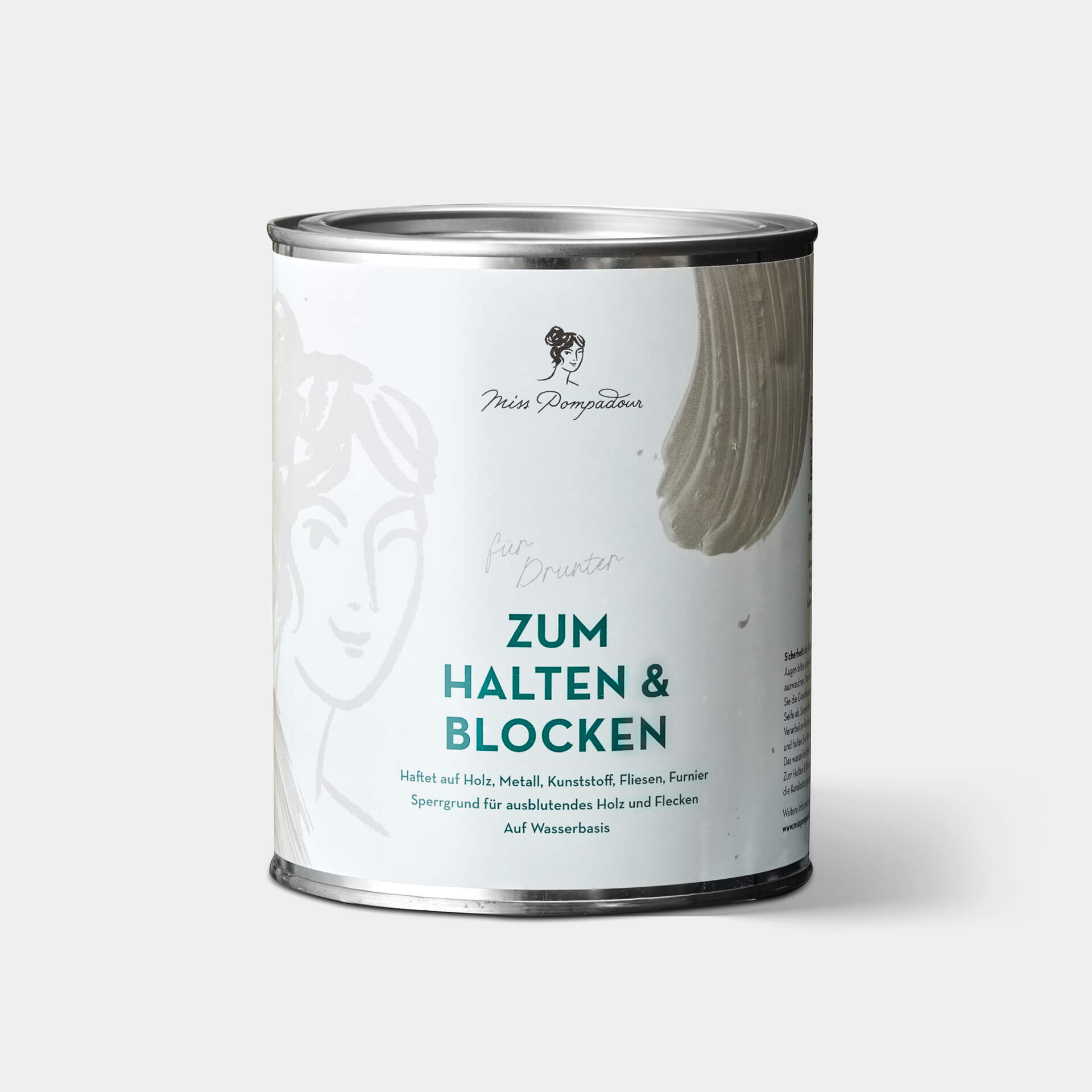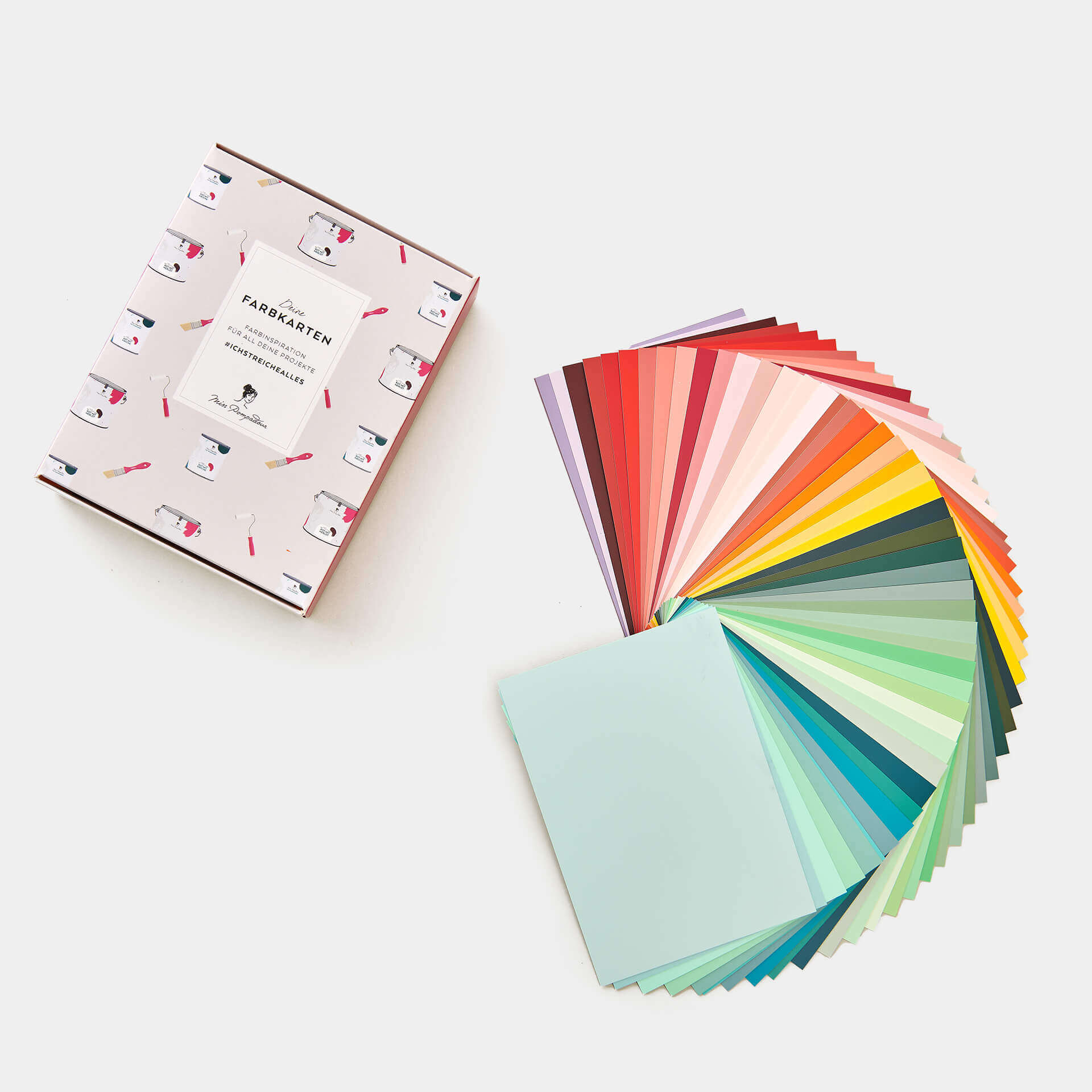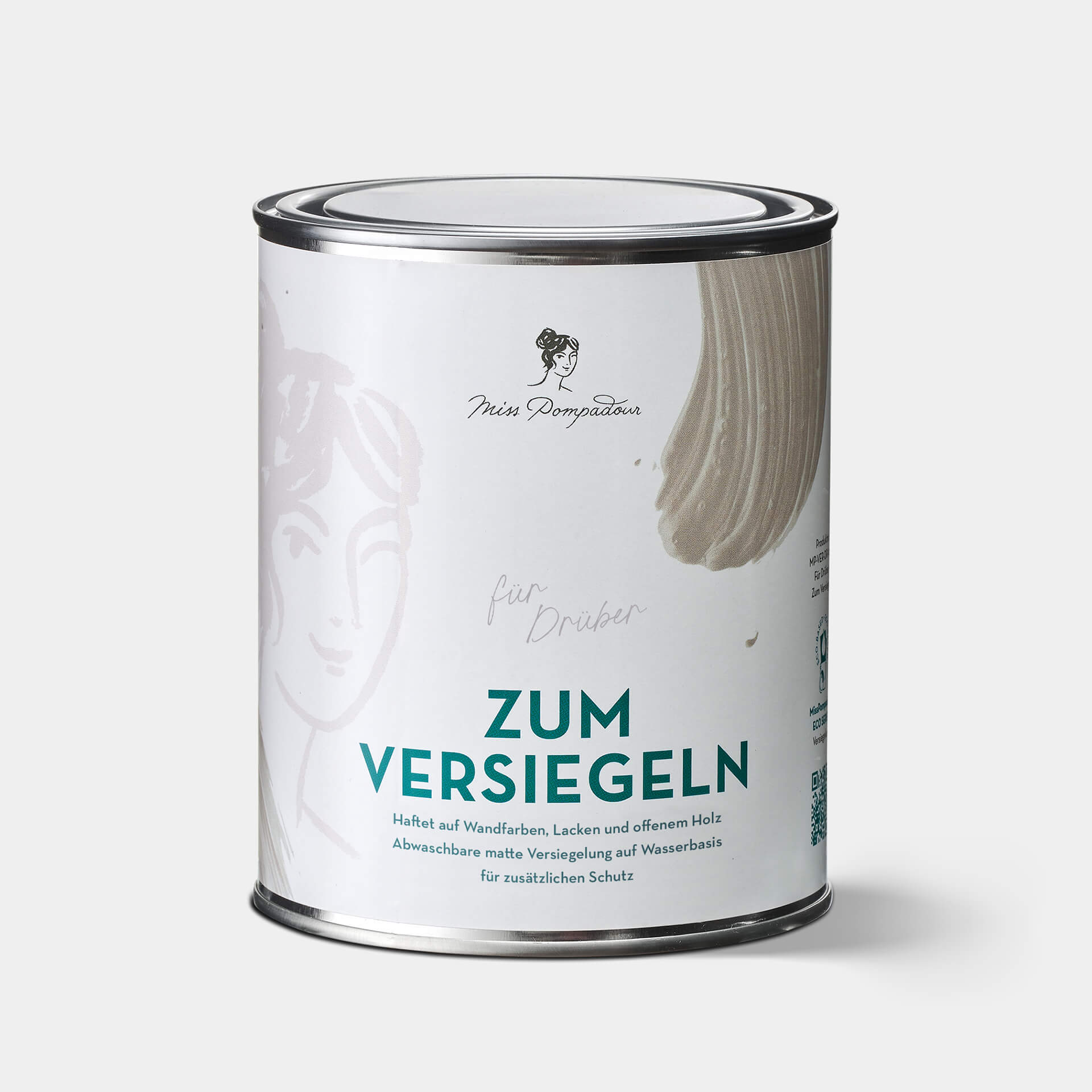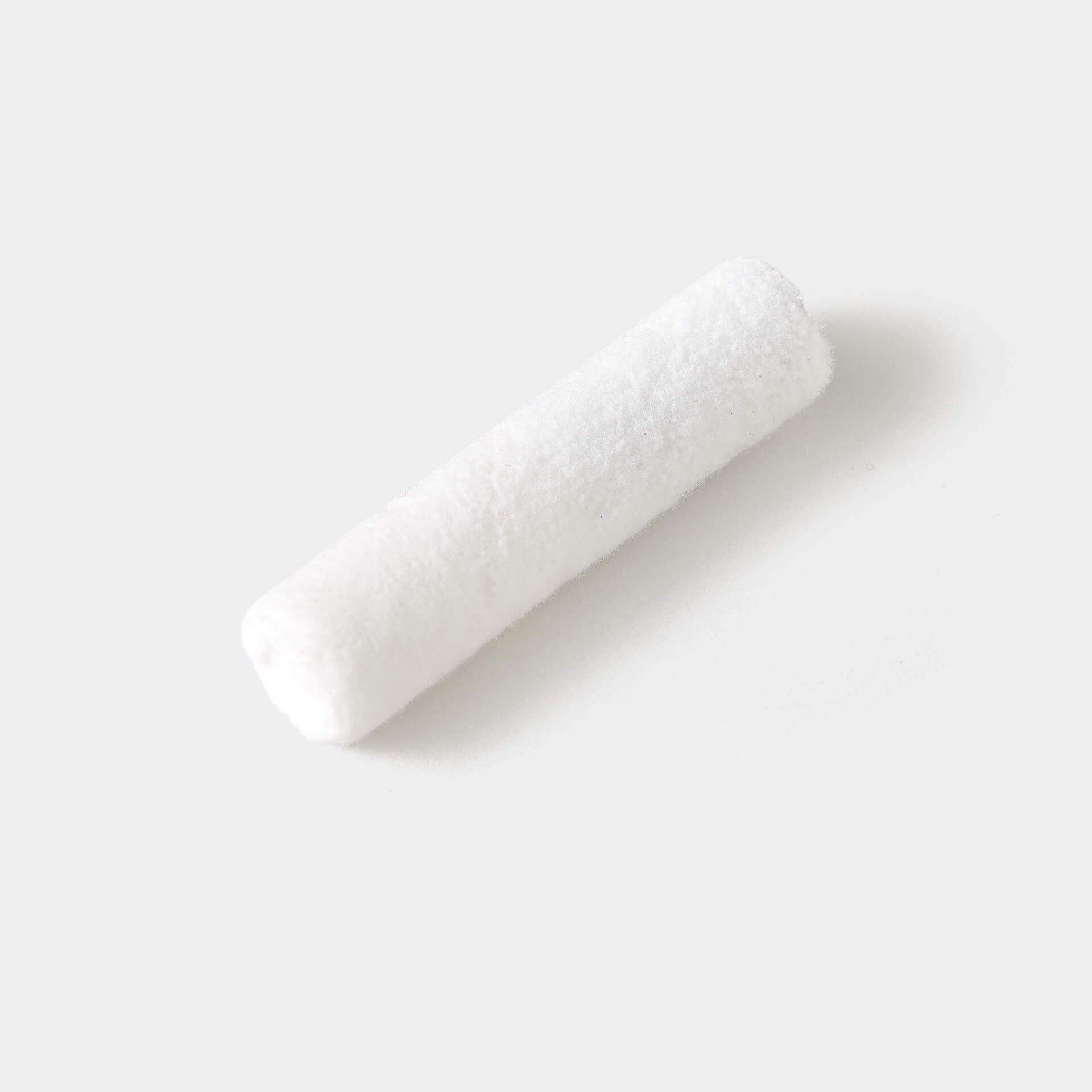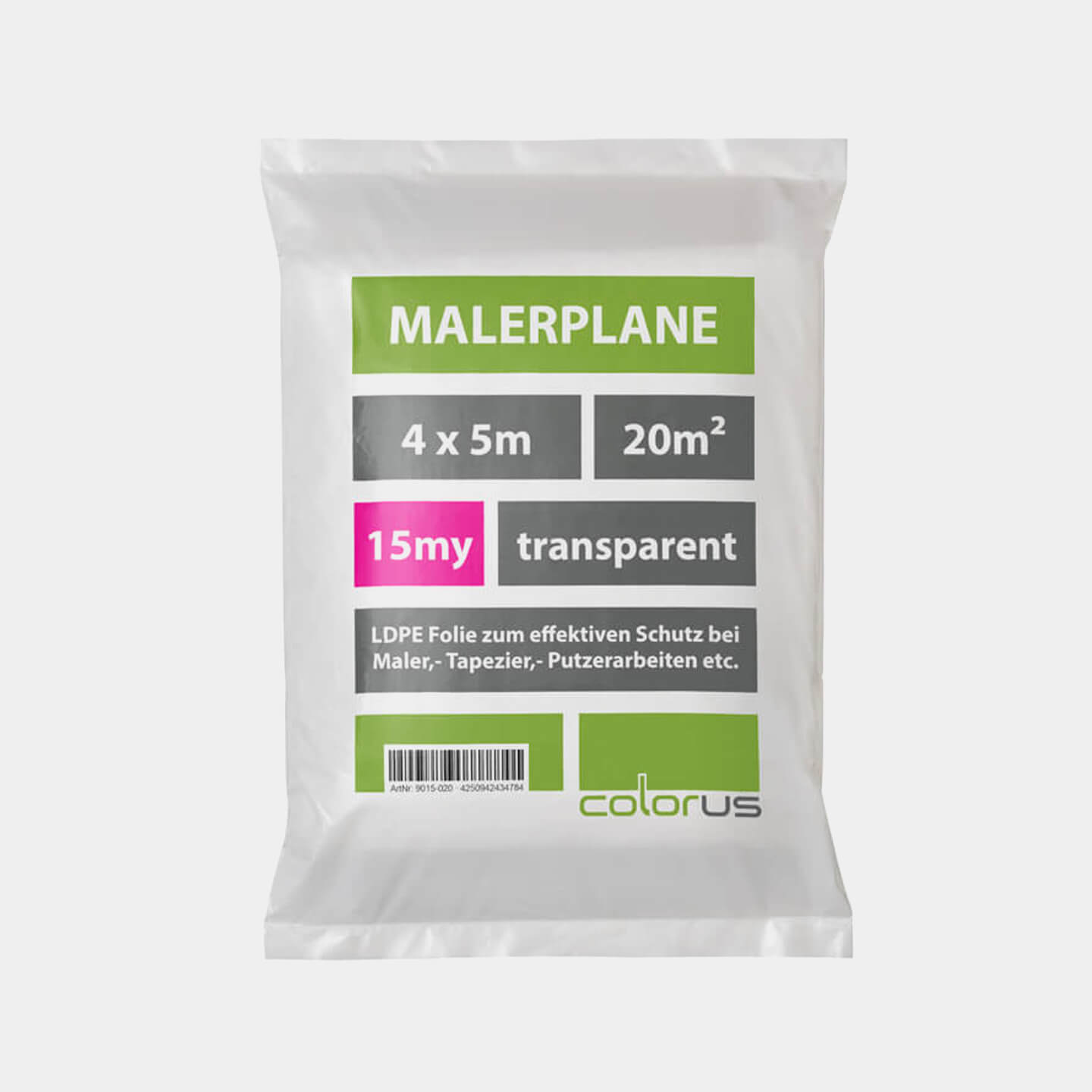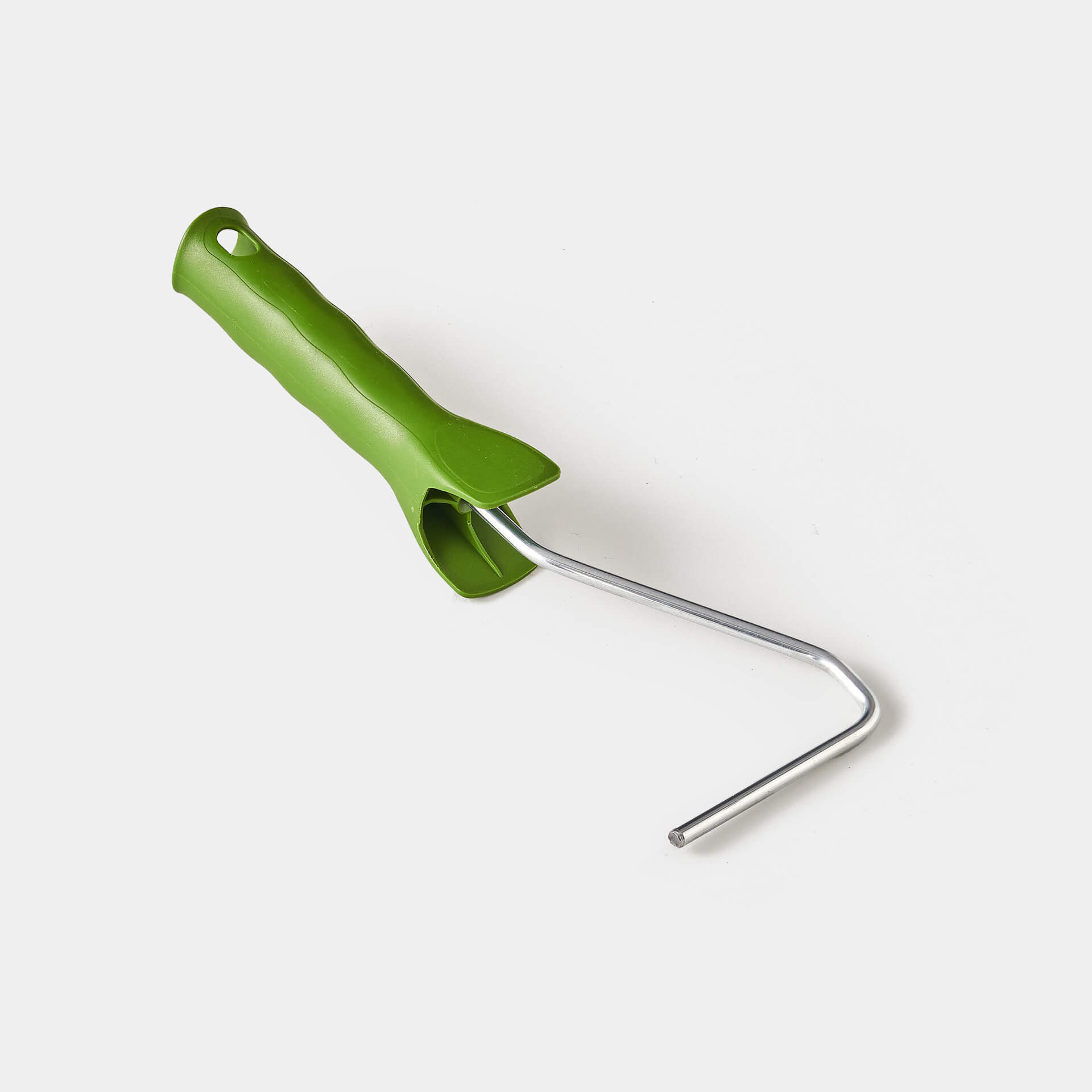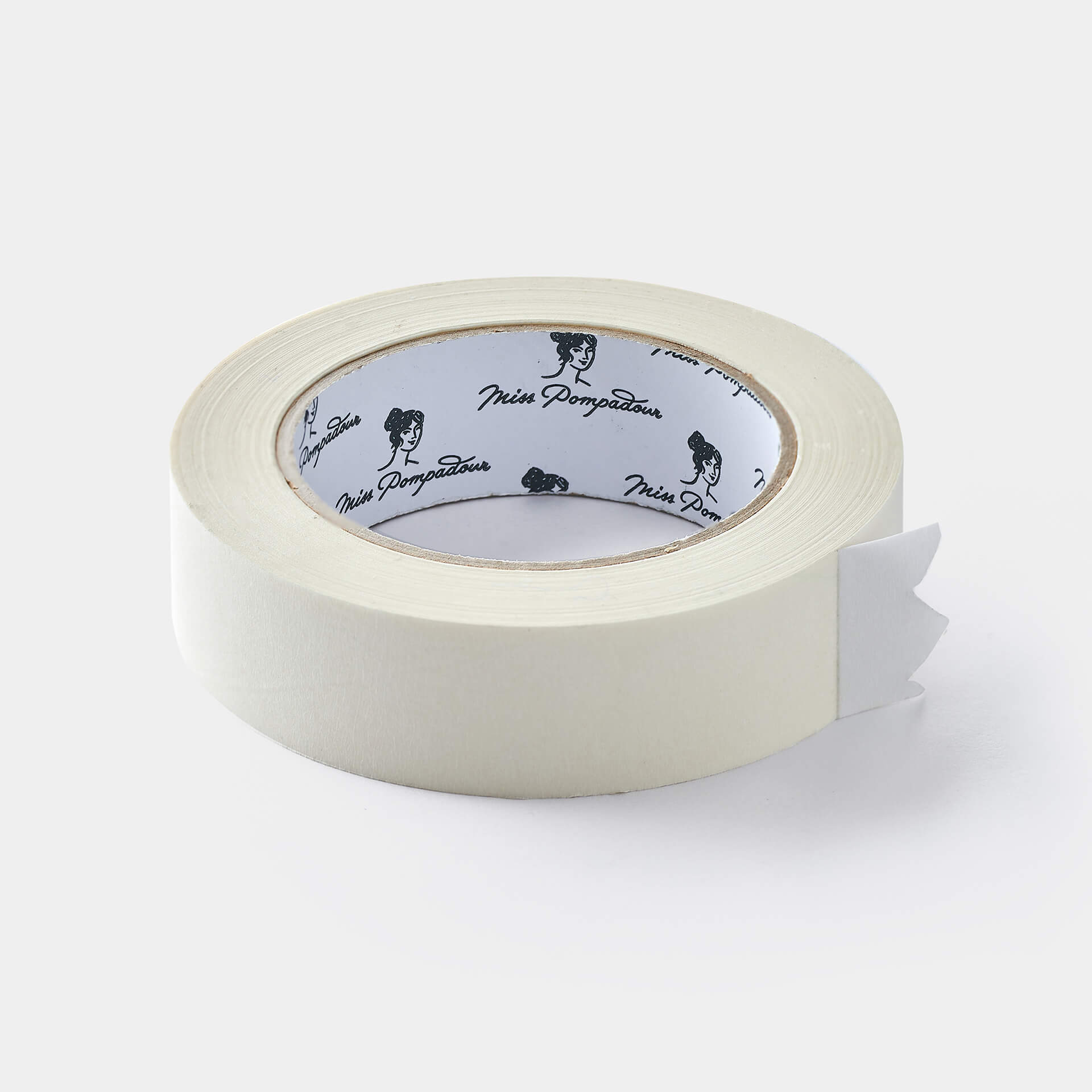Painting Wooden Ceilings and Wall Panelings: How to Beautify Old Wood Panels
In Painting - How-To · 10 min reading time
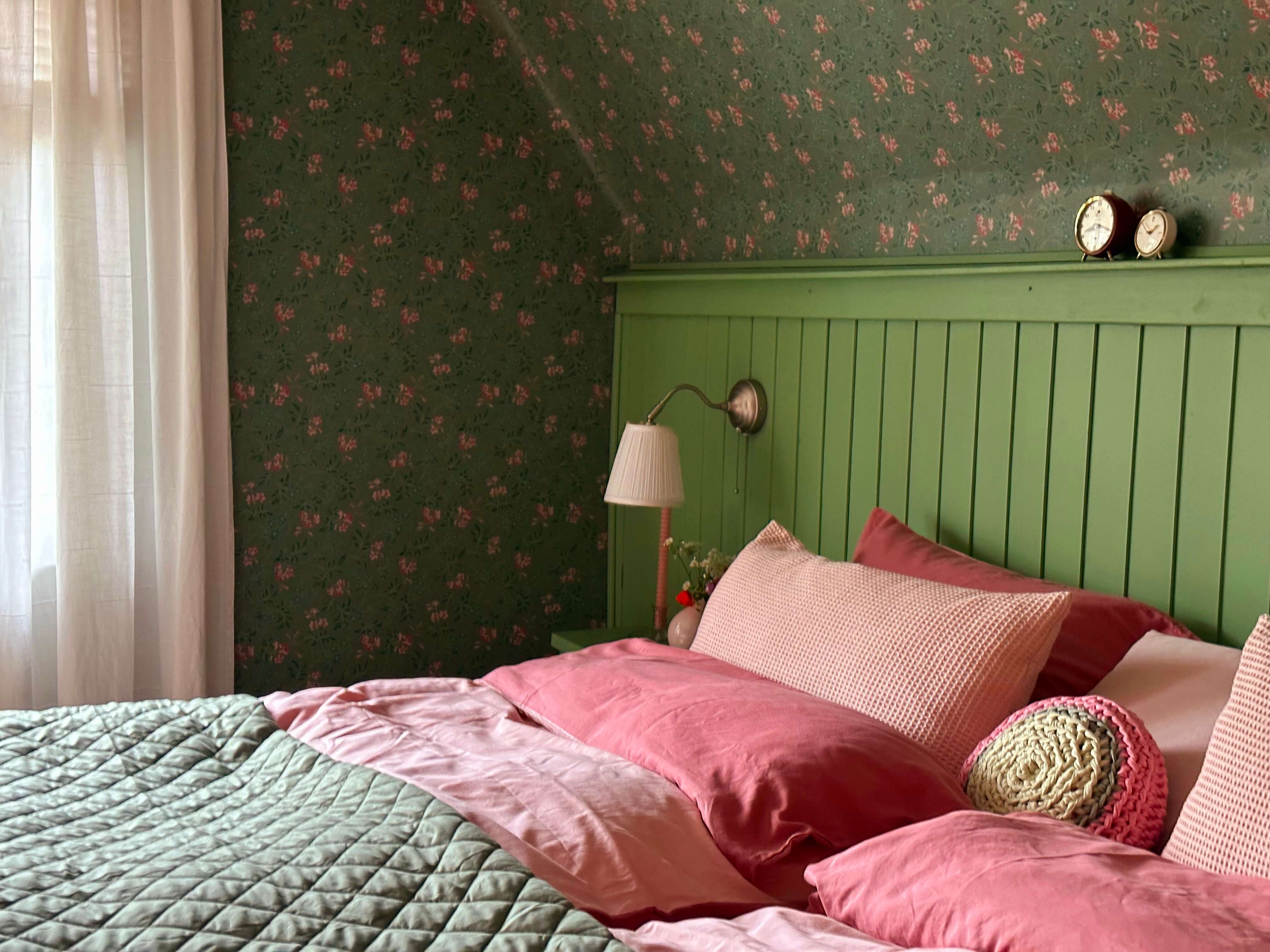
Until the 1980s, panelled ceilings were modern. Unfortunately, they no longer fit in with our modern interpretation of cosiness. Most of the time, the softwood of these ceilings develops an unattractive yellow tinge over the years. Or it is stained dark from the start and then the ceiling literally presses down on your head from above. Sometimes the panels are also made of plastic, which looks old-fashioned and oppressive. Fortunately, ceilings and wall panelling can be painted quite easily. Then they look really chic in no time at all.
Table of contents
2. Choosing the right colour for your wooden ceiling
3. Step-by-step guide: How to paint and varnish ceiling panels properly
4. Frequently asked questions about painting wood ceilings and wall panels
5. Video: MissPompadour Campus: Painting Ceiling Beams Project
6. You still need these accessories
The right colour choice for your wooden ceiling
How often do you just want to paint your wooden ceiling white? But right away questions arise! For one thing, not all white is the same - anyone who has ever been on our site will recognise this immediately. On the other hand, many people find it difficult to imagine that it can be so easy to go from brown/dark brown to white. We have explainedwhat you need to consider and how best to proceed in our instructions!
Perhaps you are wondering whether you can really paint over a brown or dark wooden ceiling? Yes, it is possible with our colours and varnishes. Take a look at our customer photos in the next section and let us convince you.
White and other light colour shades are often particularly suitable as ceiling colours, as they make rooms appear larger and wider. This is a particular advantage in narrow hallways, low ceilings and small rooms.
What you need to bear in mind when painting the ceiling white: If you want to paint your wooden ceiling white, a primer is also important here. However, our paints and varnishes also cover dark surfaces. Note, however, that when painting from dark to light, you always have to expect more coats than usual!
Before/After sample photos of painted or varnished wooden ceilings and wall panels
Why should you paint your wooden panels? If you want to remove wooden ceilings or wall panels, it often means a lot of dirt, work and maybe some nasty surprises. By painting your ceiling and wall panels, you can optically recede or create a very individual eye-catcher. And who doesn't like to change their walls occasionally, whether plastered or with panels? Take a look at how our customers have changed their rooms and let yourself be inspired!
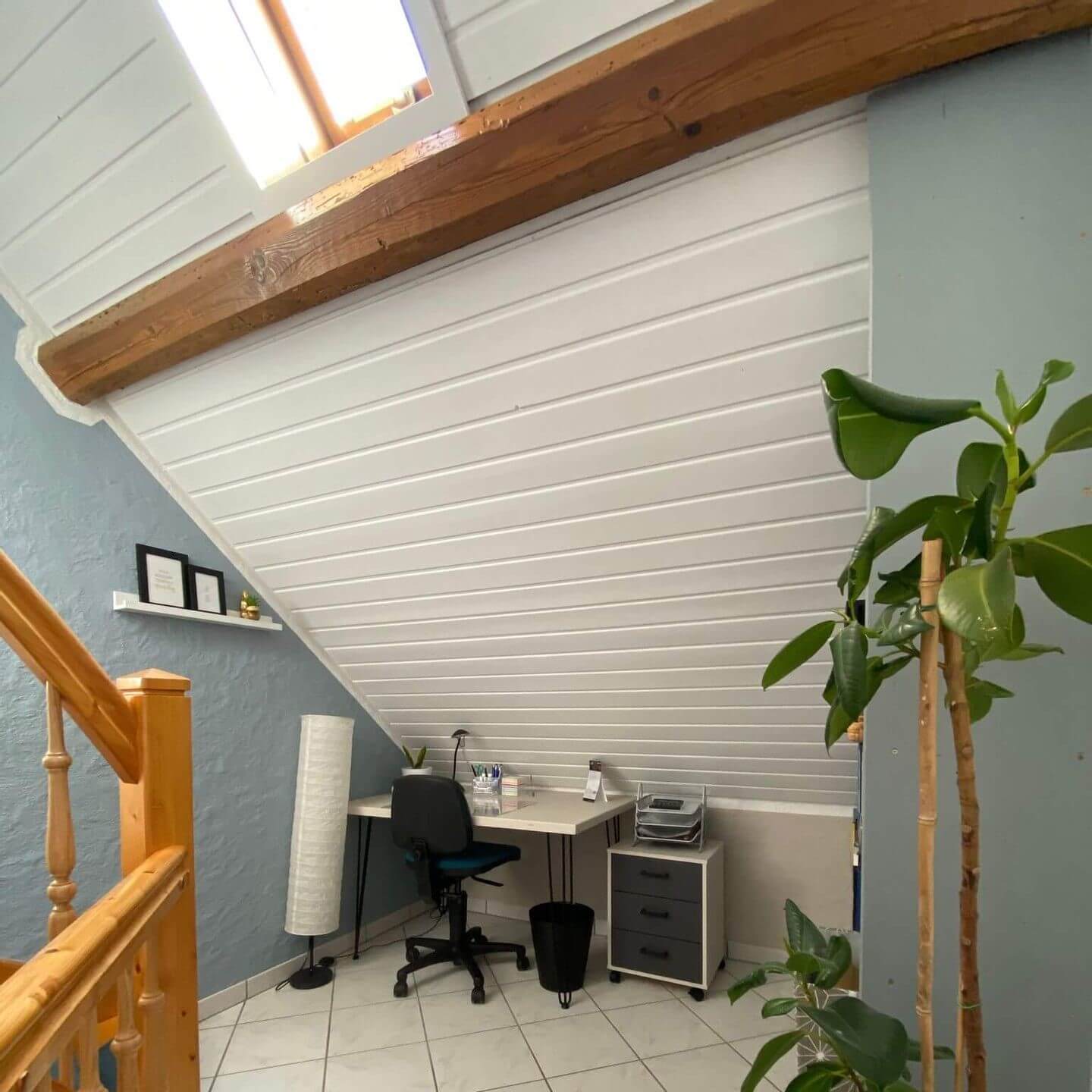
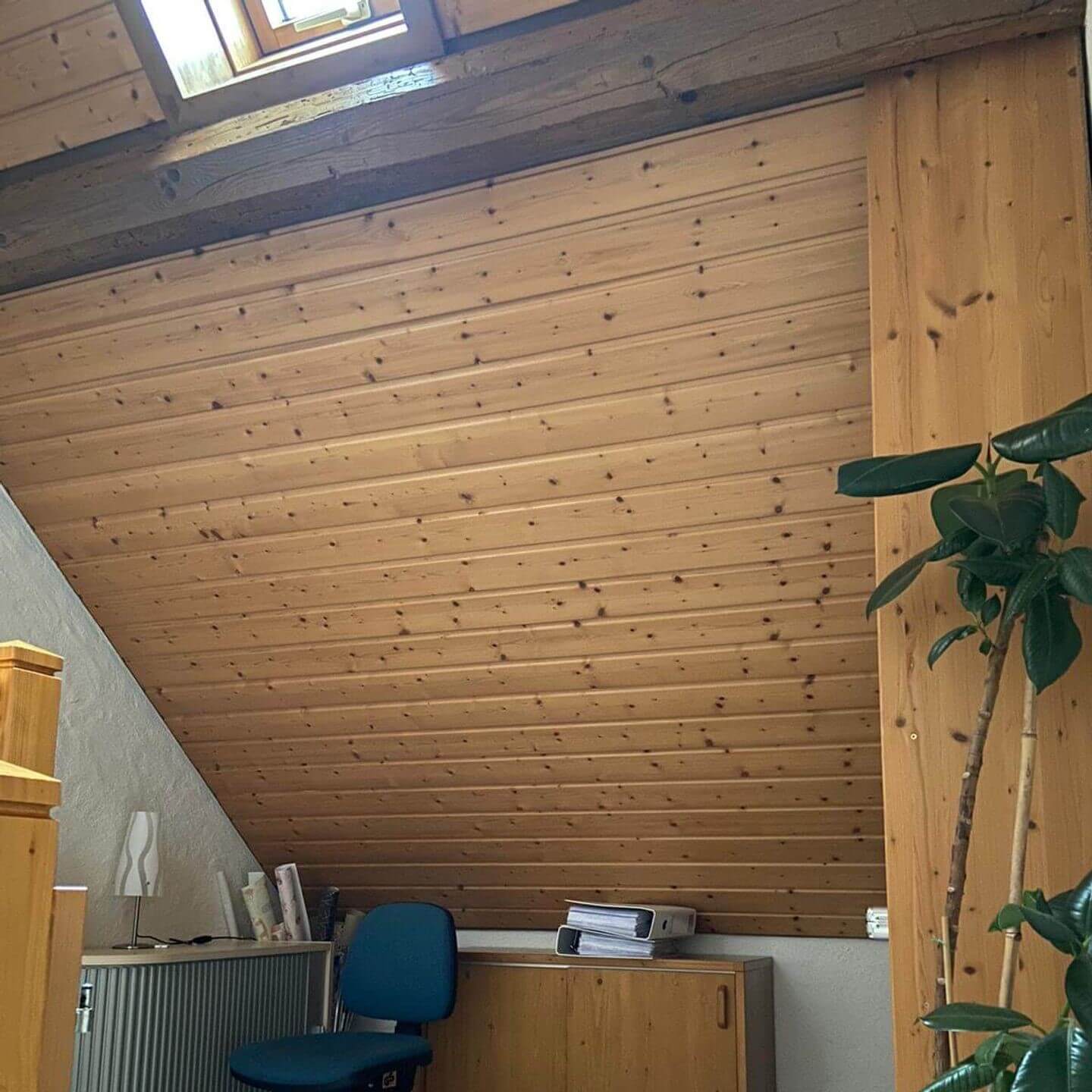
Light
- Due to the many dark wooden elements, this stairwell appeared oppressive and cramped. The new coat of paint now gives it a sense of space and lightness.
Step-by-step guide: How to paint and varnish ceiling panels correctly
Step 1: Choose a colour
To paint your wooden ceiling and wall panels, you can basically choose any colour quality, regardless of the material. If you want a semi-gloss look, choose our MissPompadour Eggshell Varnish. For a matt look, we recommend our MissPompadour Matt Varnish, the CosyColours chalk varnish or our soft LittlePomp chalk varnish. You can also use wall paints to paint the ceiling in the same look as the wall, for example. Choose MissPompadour - The Valuable Wall Paint or the chalk paints from LittlePomp, for example. If you can't decide on a matching white, it's best to order the colour cardn!
Step 2: Prepare the surface
Lightly sand down any imperfections or scratches on your panelling. You can use fine-grain sandpaper for this. Then conceal them with To Fill - MissPompadour Filler. You can also seal knotholes in this way to prevent them from leaving dark stains in your paint.
Step 3: Clean the wooden ceiling or wall panels
Clean the surfaces to prepare them well for painting. You can vacuum away dust first. Then use To Clean - MissPompadour Cleaner and lukewarm water to degrease the surfaces. Then wipe well with clean water. It is important that the surface is free of dust and grease. Everything must dry well before painting.
Step 4: Prime the surfaces
Wood:
If you have a natural wooden ceiling or wall panelling, you should prime it with To Bond & Block - MissPompadour Primer. With real wood, there is otherwise always a risk that tanning agents or stains will leave stains in your new light-coloured varnish. If you want to paint the wooden ceiling white, this step is particularly important. When using our primer, always make sure to use clean tools. Leave the primer to dry for 8 hours or overnight.
If you are expecting an increased load, then prime plastic panelling or already painted surfaces with a thick coat of To Bond & Block for better adhesion of the paint to the substrate. You can do without this for ceilings, as these are not exposed to heavy loads. With plastic wall panelling, you should play it safe and prime it, especially if you want to paint with the wall paints.
Step 5: Paint the surfaces
Now paint your desired colour. Apply as many coats of paint until you are satisfied with the application. The result is usually opaque after 2 - 3 coats, but a double coat is always recommended. Allow each coat to dry for 4 - 6 hours. The paint layers become more stable with each day - after about 14 days they have reached a resilient stability. If you are painting tongue and groove boards, you can pre-paint the grooves, i.e. the joints, wonderfully with our fine MissPompadour brush, e.g. in 50 mm. You can then paint the surfaces with the varnish roller for water-based varnishes.
Step 6: Sealing wall panels
You do not need to seal ceilings, as they are hardly ever exposed to manual stress. For wall panels, you can use To Seal - MissPompadour Topcoat for an even more robust surface. Especially if you have painted with the wall paints, it is advisable to seal the surfaces depending on the load. Apply the topcoat after the paint has dried for 24 hours.
Video: MissPompadour Campus: Project Painting Ceiling Beams
Frequently asked questions about painting wall panels and wooden ceilings
1. Things to know about preparation
Do I have to sand the wood before painting?
Basic sanding is not necessary. Only if parts of an old coating on the wooden panels come off should they be sanded smooth.
Do I need to prime the ceiling or wall panels?
For real wood panels, use MissPompadour To Bond & Block as a primer to ensure that the wood does not release discolouration into the new paint. This is especially important with oak, tropical woods and softwoods, as these tend to release tannins. Stained and glazed woods can also discolour your paint.
For plastic surfaces, you can use MissPompadour To Bond & Block as a primer. The paint will then adhere better to the surface and the surface will be perfectly prepared for painting.
How do I determine the right amount of paint?
Next to each colour shade in our shop you will find the practical quantity calculator. Simply enter the square metres to be painted and you will get the estimated consumption for two coats.
Can you paint a wooden ceiling with wall paint?
Yes, you can paint wooden ceilings not only with varnish but also with wall paints. You can sand the wood first so that it absorbs the paint better. Especially if you want the ceiling to blend into the background, you can use wall paints to adapt the look of the ceiling to that of the walls.
Do I need to seal the ceiling or wall panels?
If you want to paint your wooden ceiling, you can save yourself the topcoat here. Ceiling panels are not usually exposed to heavy loads, so a topcoat is not necessary.
2. Painting overhead made easy
How do I paint without dripping?
Our colours and varnishes are all sufficiently thick and do not tend to drip. Depending on the painting technique, this can still happen. We recommend that you do not dip the brush completely into the paint, but only about ⅔ of the bristles. Then the paint is really spread and does not drip down the brush. Never place the roller in the paint tray with the handle in the paint, otherwise the paint can drip off the handle. Please still protect your floor and furniture with plastic drop cloth, painter's fleece or paper
Which roller do I need to paint the wooden ceiling?
Most wood panelling - and also that made of plastic - has grooves, i. e. small indentations. These can be pre-painted very well with our fine MissPompadour brushn. Then use the varnish roller for the surface.
Can I also spray the paint?
Let's face it - painting a wooden ceiling is exhausting. So if you want to paint your ceiling panels, you can speed up your project considerably with the help of a Wagner paint spray system. Dilute the paint with approx. 10% water. It's best to practise on a test piece or an inconspicuous area first. You'll soon get the hang of it.
3. Special features
Can coated panels and ceiling laminate be painted?
Yes, you can actually do that very well. You can simply paint the ceiling with the colour of your choice. If you prime it with MissPompadour To Bond & Block, you'll make the first coat a little easier. The colour can then be painted more evenly on the smooth surface. You should always primeplastic panels on walls, as they are usually exposed to much higher loads than the ceiling. The paint then adheres better and the first coat can also be painted better for a beautiful result.
How can I preserve the wood grain but still lighten the ceiling?
If you like the look, but your wooden ceiling is too dark and oppressive overall, you can also finish it with a white wax. As the number of layers increases, so does the brightness and opacity. Make sure to spread the wax evenly.
Since wooden panels are often made of wood, which tends to bleed, it is not advisable to use a glaze. In this case, the panels first need a primer, which, however, already covers the grain. Therefore, wax is recommended.
However, if you only have a wood look and the panels themselves are made of plastic, you can work with a glaze. Mix your desired colour with up to 50% water to obtain a glaze.
You still need these tool products
Of course, there are a few more tools and supplies you 'll need to have on hand when painting wood!
- Cleaning cloths and buckets: to thoroughly clean the surfaces first: The surface must be free of dust and grease for your paint to hold well.
- Sandpaper or sanding pad: For all areas where old varnish has flaked off. These should first be sanded smooth with a fine grit.
- Masking tape for masking: Always remove the masking tape when the paint is not yet dry to ensure a clean edge.
- plastic drop cloth, painter's fleece or newspaper: To protect your floor and furniture.
- Brush, varnish roller and paint tray: It is best to pour the varnish into the paint tray. Paint corners, edges and recesses with the brush and the surfaces with the varnish roller.
- Ladder or small work platform: to make it easier to reach the ceiling.
Finished reading yet?
Here you will find more exciting topics
Your new favourite colour for your ceiling
How to make your project perfect
Content: 91 piece (€0.14* / 1 piece)
Content: 0.4 Kilogramm (€24.75* / 1 Kilogramm)

